Remember the whir of the PlayStation 2 booting up, the feel of the DualShock 2 in your hands, and the sheer magic of exploring vibrant, three-dimensional worlds for the very first time? For many of us, the PS2 wasn’t just a console; it was a gateway to unforgettable adventures, and the platformer genre was its beating heart. From iconic mascots to forgotten gems, the PS2 library delivered an incredible array of platformers that defined a generation of gaming.
In this definitive guide, we’re counting down the 30 best PS2 platformer games of all time. We’re revisiting the classics that built legendary franchises, uncovering the hidden gems that flew under the radar, and celebrating the creative brilliance that made this era so special. Whether you’re a seasoned collector looking to rebuild your library or a curious newcomer ready to experience these classics for the first time, consider this your friendly, expert-led tour through the very best of PS2 platforming. Let’s jump in.
Ratchet & Clank
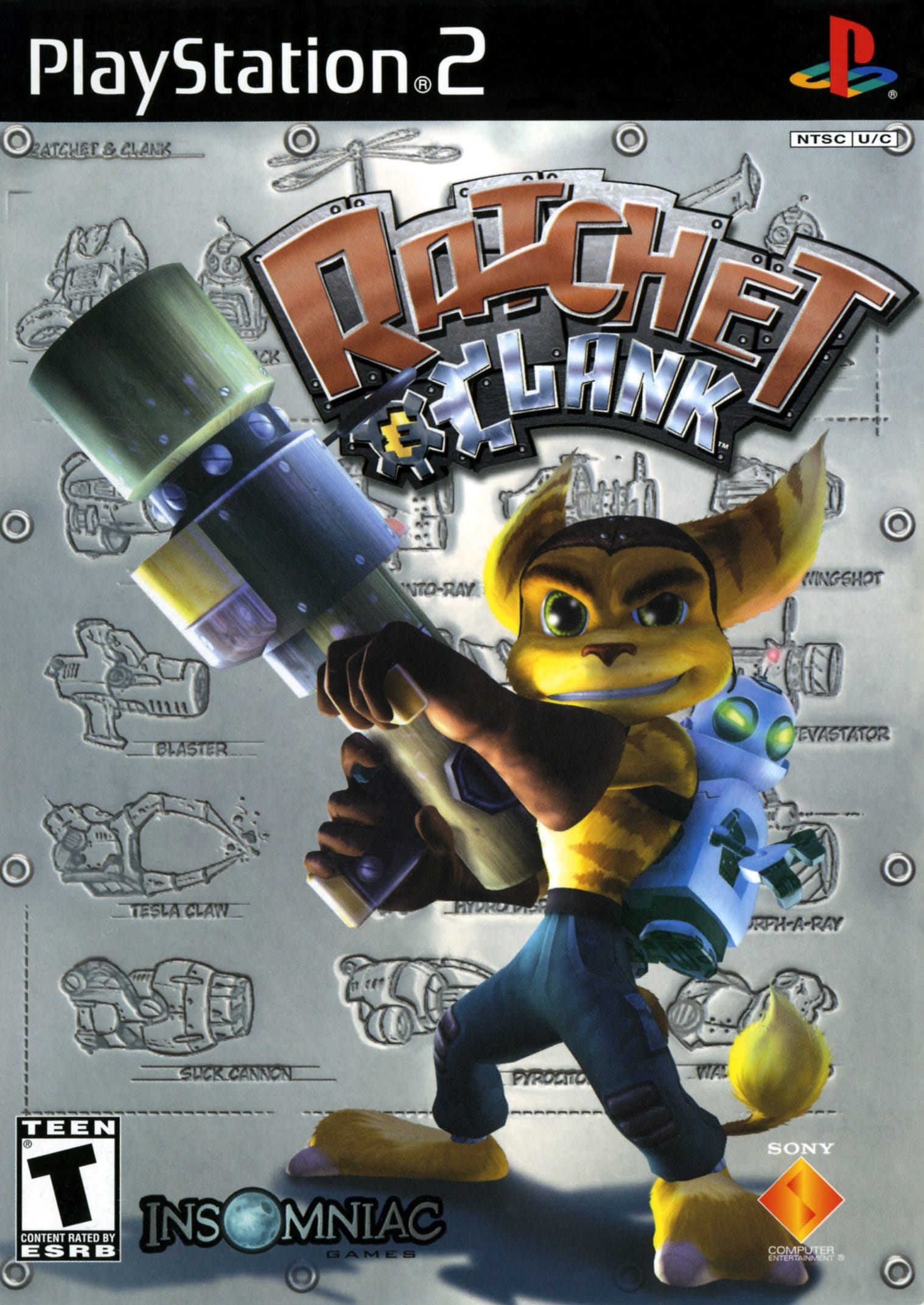
- Developer: Insomniac Games
- Release Date: November 4, 2002
The original Ratchet & Clank wasn’t just another platformer; it took the core concept of jumping on stuff and fused it with a weaponry system so absurdly creative it felt like a playground of destruction. This wasn’t about collecting mundane trinkets; you were grinding for bolts to buy the freaking R.Y.N.O. And who could forget the first time they turned a squad of enemies into helpless chickens with the Morph-O-Ray? The universe felt genuinely lived-in, from the grimy streets of Metropolis to the sprawling beaches of Planet Pokitaru. The writing, a masterclass in sarcastic, self-aware humor, gave us characters like the egomaniacal Captain Qwark and set the tone for the entire series.
Why It's Worth Playing: Playing the original Ratchet & Clank today is essential for understanding the DNA of one of PlayStation's most enduring franchises. You get to see the raw, unpolished blueprint for everything that followed—the hilarious character dynamics, the inventive weapon concepts, and the sprawling interstellar adventure. It’s a time capsule of early 2000s game design that somehow still feels fresh because its core premise—blowing stuff up with wildly imaginative tools—is simply timeless. IMO, it's a must-play for any serious fan of the genre, if only to truly appreciate how far the series has come.
Ratchet & Clank: Going Commando
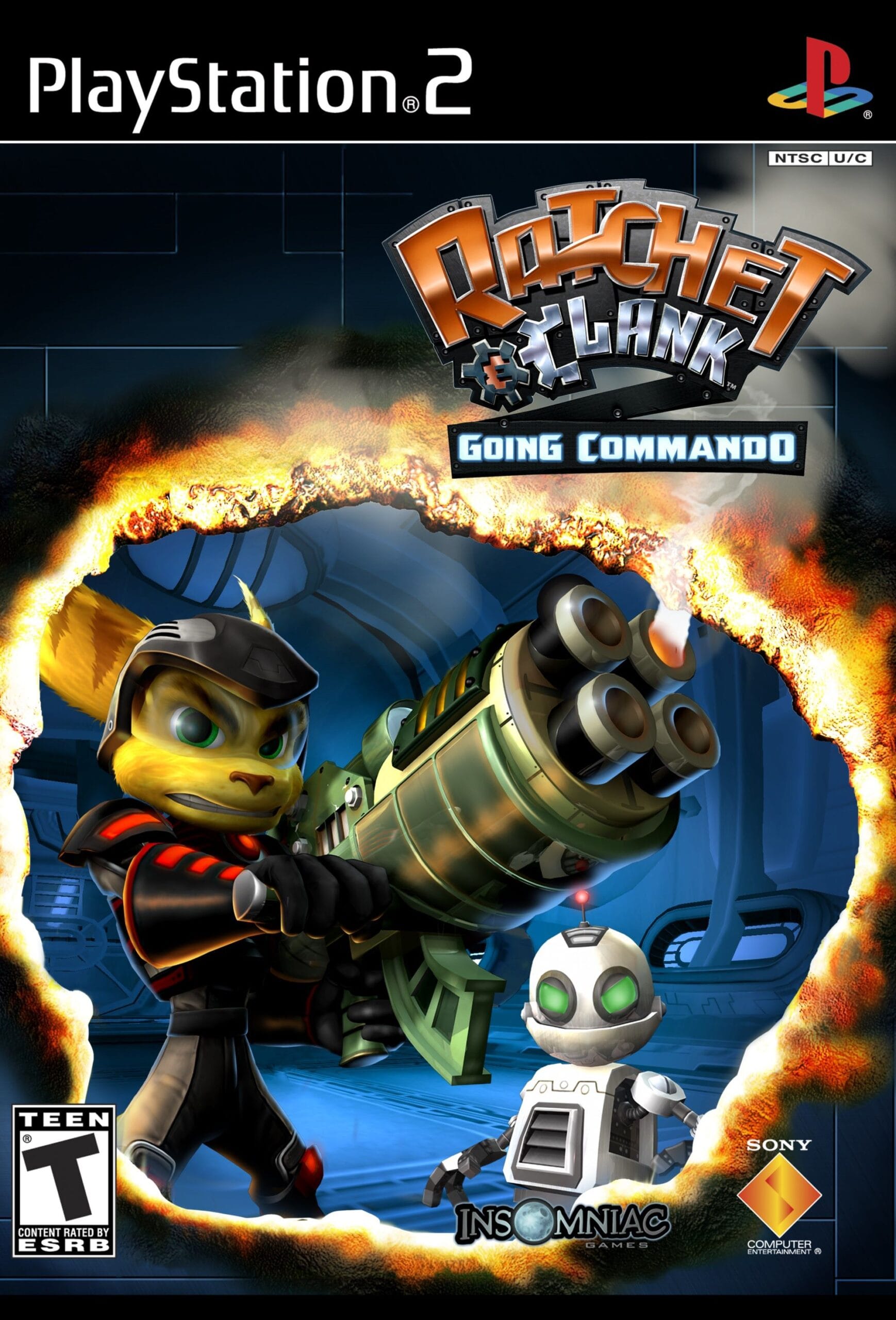
- Developer: Insomniac Games
- Release Date: November 11, 2003
If the first game was the blueprint, Going Commando is the damn skyscraper. This is the game where the series truly found its identity and, let’s be honest, its swagger. The most immediate and glorious change? Strafing. You could finally circle-strafe a room full of enemies while unleashing hell, and it felt as smooth as butter. This is where the series’ iconic weapon leveling system was born. Who didn’t spend hours grinding to upgrade the Lava Gun into the Liquid Nitrogen Gun? They even threw in space combat sections and giant arena battles, just because they could. The scope is bigger, the jokes are sharper, and the pacing is virtually flawless.
Why It's Worth Playing: Going Commando is often loved by fans for a reason— it was the definition of "more is better”. It has the exploratory spirit of the original but refines the combat into something sublime. The weapon upgrade system is hopelessly addictive, offering a fantastic gameplay loop that keeps you hunting for just a few more bolts. It’s the quintessential sequel—it does everything the first game did, but bigger, better, and with more polish.
Ratchet & Clank: Up Your Arsenal
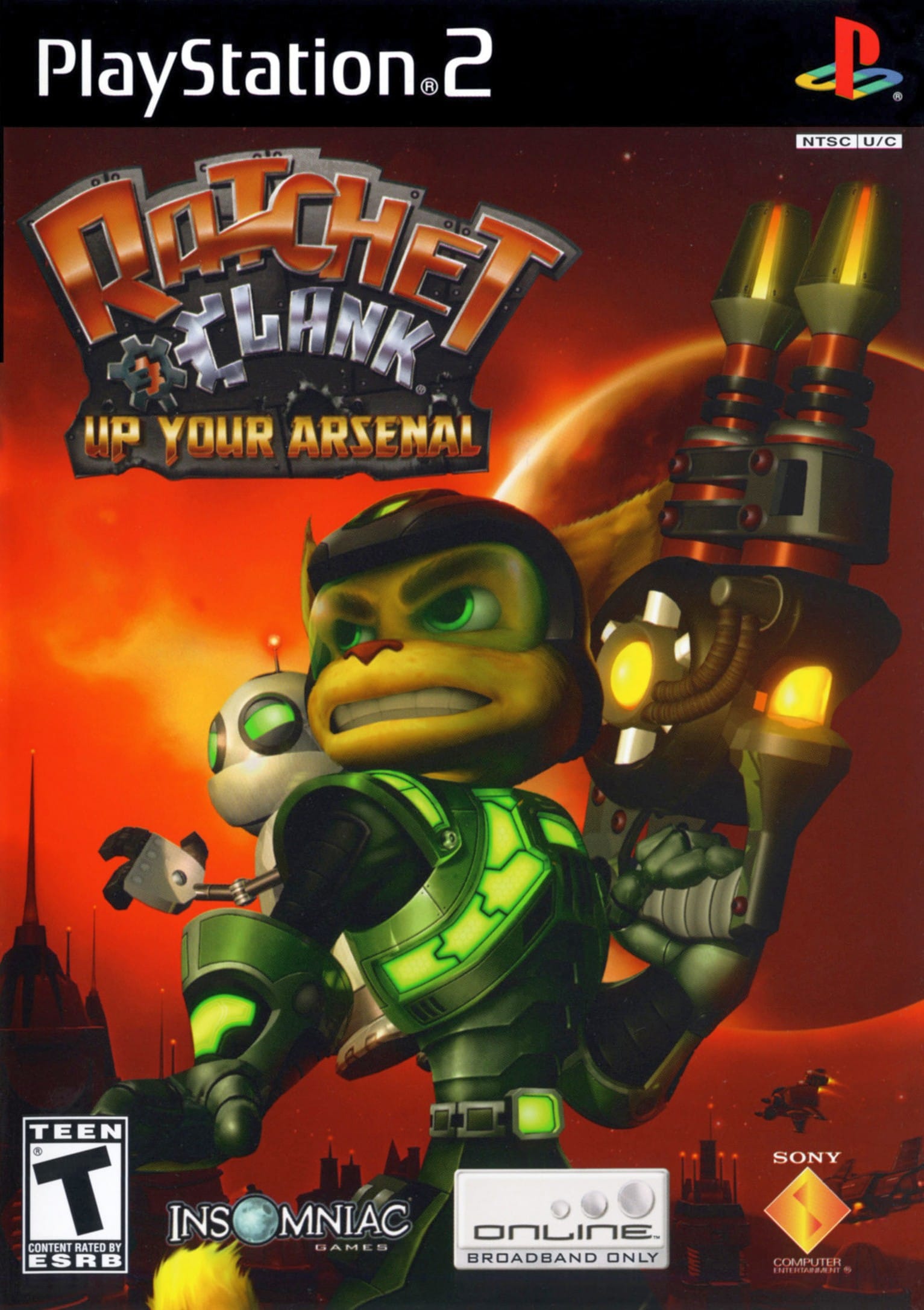
- Developer: Insomniac Games
- Release Date: November 3, 2004
How do you follow up a masterpiece? You throw out the rulebook and create an all-timer. Up Your Arsenal isn’t just the best game in the series; it’s a strong contender for the greatest action-platformer ever made. The gameplay is tighter than Captain Qwark’s spandex. The controls are impeccably responsive, turning Ratchet into an acrobatic whirlwind of death. The arsenal is the series’ magnum opus, featuring classics like the suck-it-all-up Vacuumator and the brutally efficient Plasma Coil. But the real star is the story. The story seamlessly blends epic stakes with laugh-out-loud humor, with Dr. Nefarious and his loyal butler, Lawrence, instantly becoming iconic villains.
Why It's Worth Playing: Up Your Arsenal is the absolute pinnacle of the series and a masterclass in game design. The pacing is flawless, constantly introducing new weapons, planets, and jokes without ever overstaying its welcome. It represents a studio at the absolute top of its game, perfectly blending tight platforming, inventive combat, and a genuinely witty script. It has aged like a fine wine, and its brand of chaotic, joyful mayhem is still utterly irresistible today. If you only have time for one classic Ratchet game, this is the one I’d point you toward without a second thought. It’s that good.
Ratchet: Deadlocked
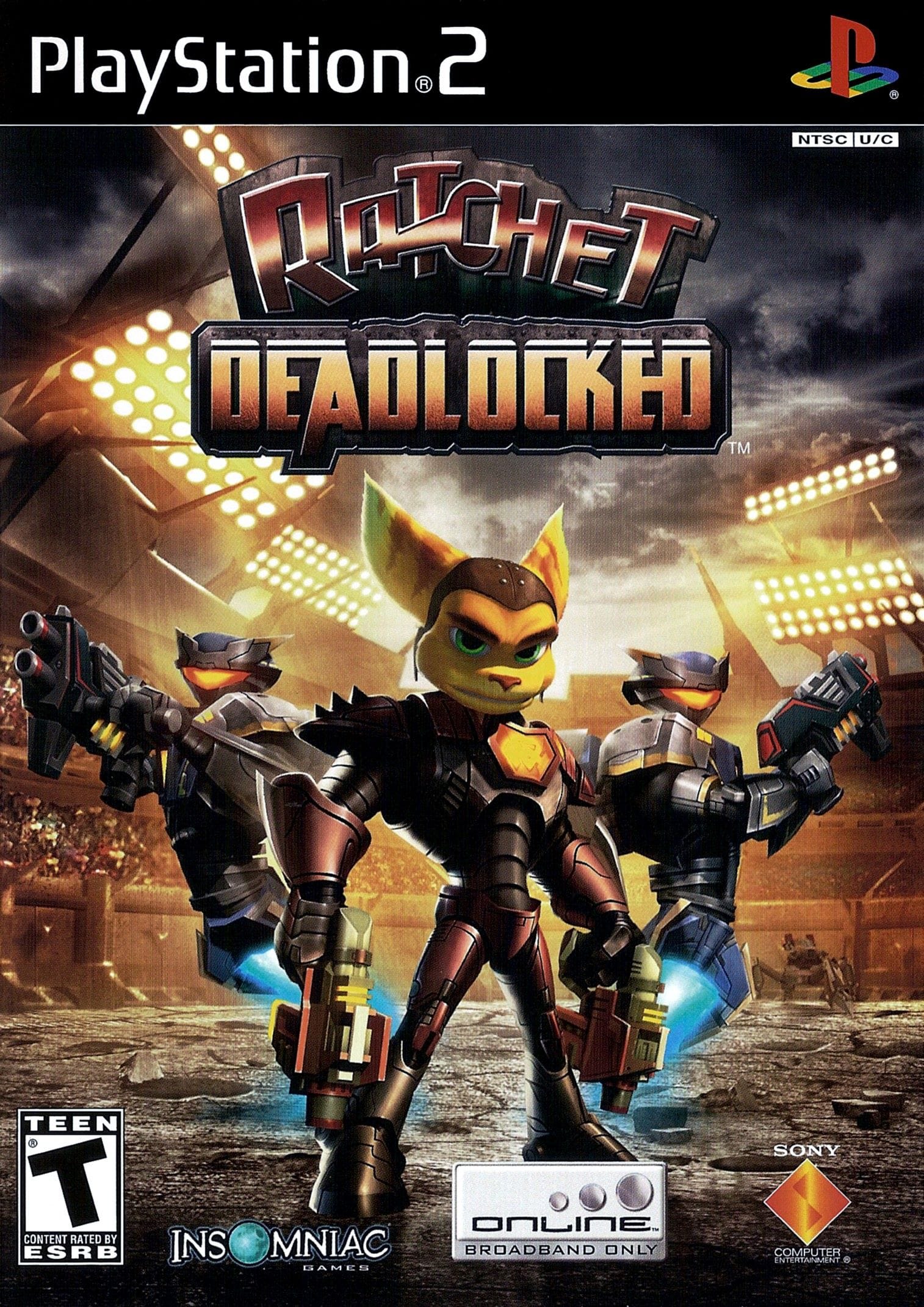
- Developer: Insomniac Games
- Release Date: October 25, 2005
Insomniac decided to take a hard left turn, stripping away the planet exploration and quirky platforming to deliver a combat-centric, arena-based shooter. And you know what? Deadlocked is a hell of a lot better than its reputation suggests. The game throws you into the gladiatorial reality show, DreadZone, and it fully commits to the bit. The new weapon mod system adds a fantastic layer of strategy, letting you customize your tools of destruction to suit your playstyle. Want a shotgun that fires freezing rounds? Go for it. How about a rocket launcher that leeches health? It’s yours. The tone is darker, grittier, and more self-serious, which was a shock after the comedic heights of Up Your Arsenal.
Why It's Worth Playing: Deadlocked provides one of the most satisfying combat experiences on the PS2. The weapon mod system is incredibly deep, the action is constant and chaotic, and the Hovership controls are sublime. It’s a fantastic spin-off that proves Ratchet’s mechanics are strong enough to support an entire game built around them. It lacks the variety and heart of the mainline titles, but as a pure, unadulterated blast-a-thon, it’s ridiculously fun.
Jak & Daxter: The Precursor Legacy
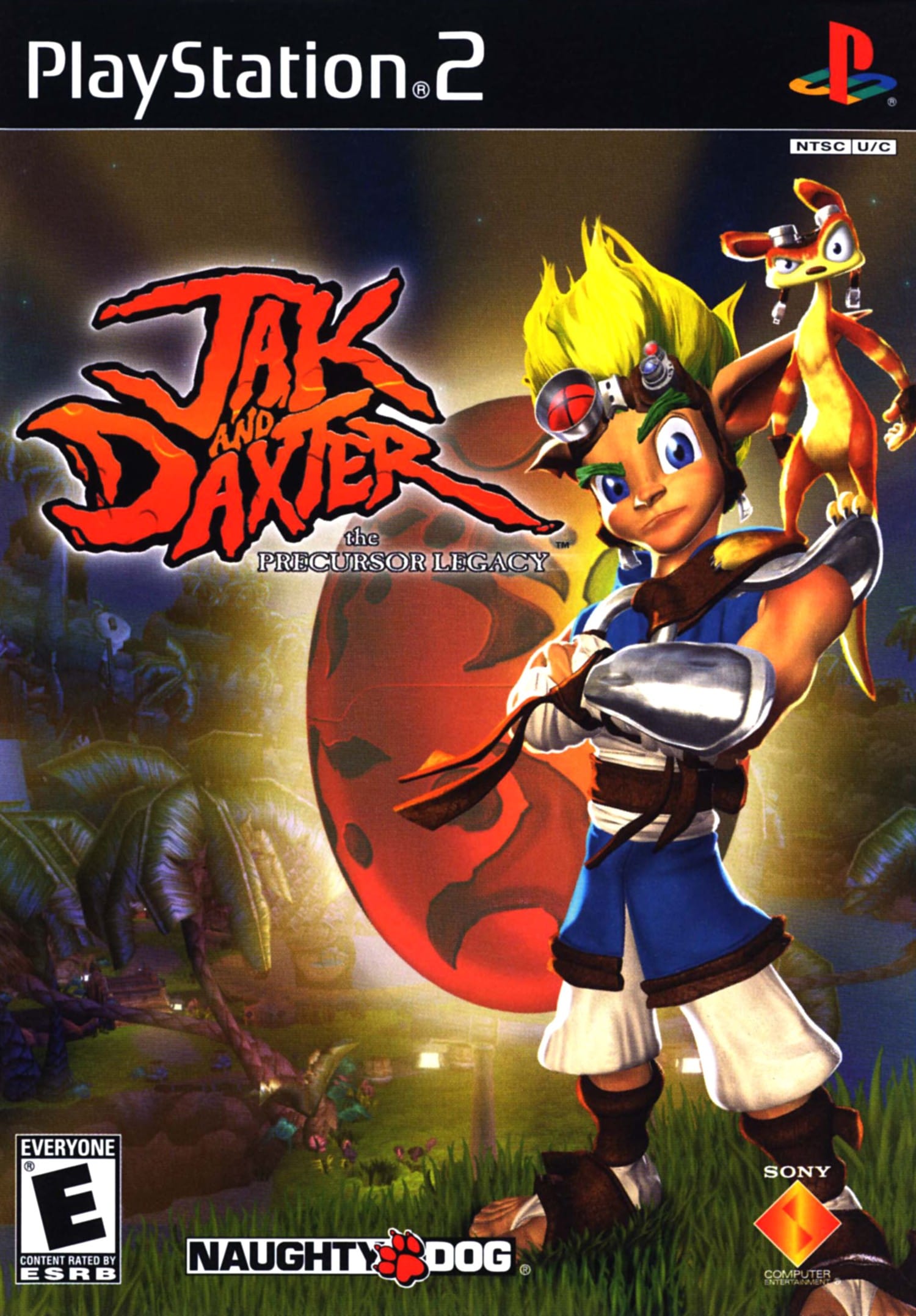
- Developer: Naughty Dog
- Release Date: December 3, 2001
Before Nathan Drake was swiping treasures, Naughty Dog crafted Jak & Daxter: The Precursor Legacy, which was a technical marvel. The big sell? A seamless world with no loading screens. You could run from Sentinel Beach all the way to the Forbidden Jungle without a single hiccup. That was amazing in 2001, and honestly, it’s still impressive today. The vibrant, colorful art style has aged like a fine wine, and the character animations are full of personality. The gameplay is pure, concentrated 3D platforming joy. It’s all about the simple pleasures: the perfect arc of a double jump, the satisfying thwack of a spin attack, and hunting for those precious Power Cells. The Precursor Orb sound effect is literally burned into my brain.
Why It's Worth Playing: This is a masterclass in foundational game design. It’s the perfect entry point for the series and a quintessential collectathon that captures the optimistic spirit of early 3D platformers. The controls are tight, the world is a joy to explore, and it’s just… fun. Pure, undiluted fun. Playing it is like a warm hug of nostalgia, and it remains one of the most polished and accessible platformers on the entire system. You gotta respect the classics, and this is one of the best.
Jak II
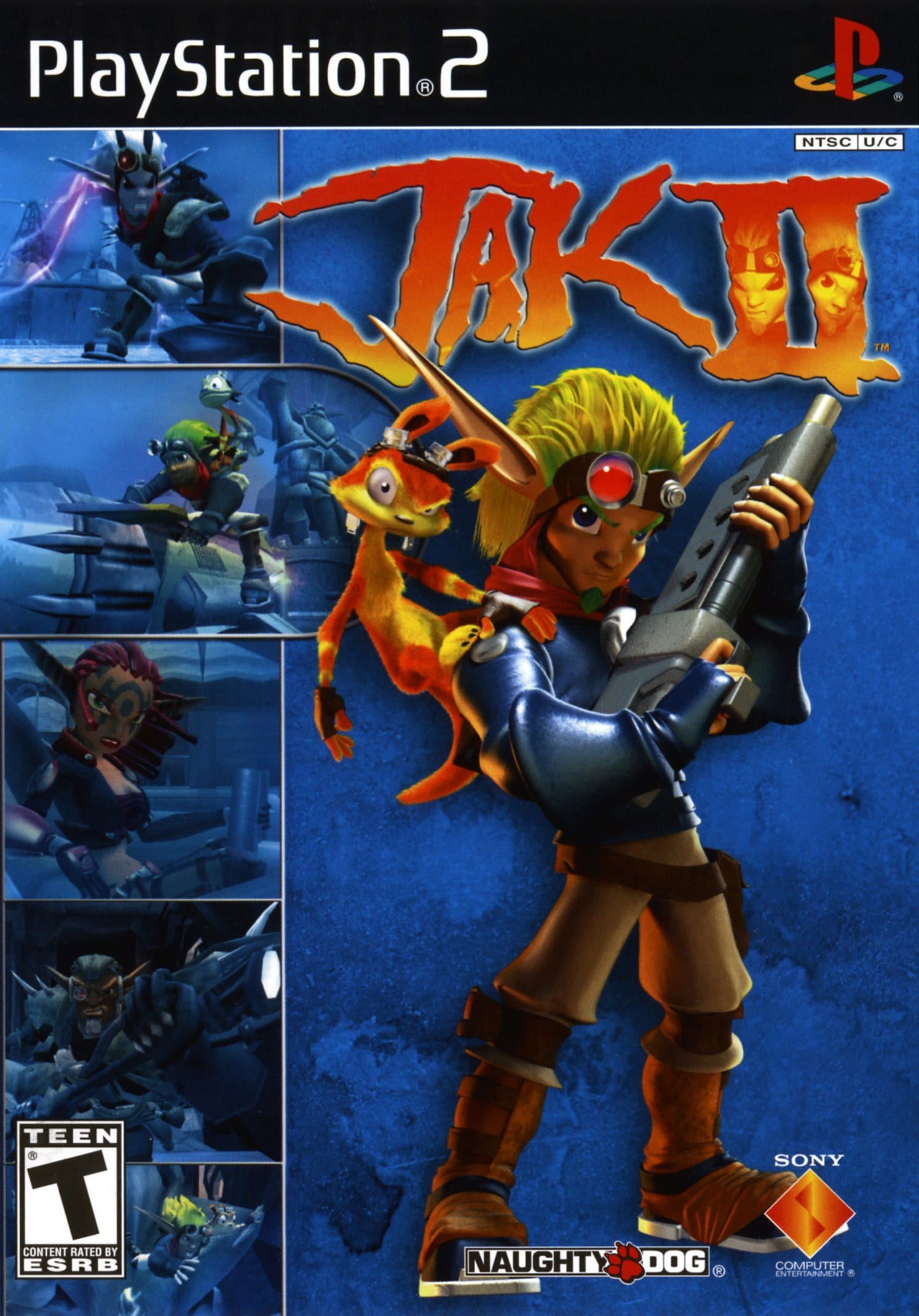
- Developer: Naughty Dog
- Release Date: October 14, 2003
Naughty Dog looked at their bright, cheerful platformer and said, “Let’s give the main character a voice, a massive attitude problem, and throw him into a dystopian hellhole.” And somehow, it worked. Jak II is one of the most audacious, genre-bending sequels ever made. This is where Jak gets his edge, literally and figuratively. The story is darker, more complex, and surprisingly mature, dealing with themes of tyranny, rebellion, and identity. The gameplay expands wildly to include GTA-style missions, driving hovercars through the city, and packing more firepower than a small army. The learning curve is steep—some of those escort missions are brutally difficult—but the payoff is immense.
Why It's Worth Playing: Jak II is essential playing because it’s a breathtaking risk that paid off. It’s a bold, no-holds-barred reinvention that showed just how narrative-driven and mature a platformer could become. The world of Haven City feels alive and dangerous in a way few other game worlds do, and the sheer variety of gameplay—from platforming to shooting to driving—keeps you constantly on your toes. Yeah, it can be frustratingly hard at times, but this ambitious (and sometimes messy) masterpiece proved that platforming heroes could grow up and tackle more than just collecting shiny things.
Jak 3
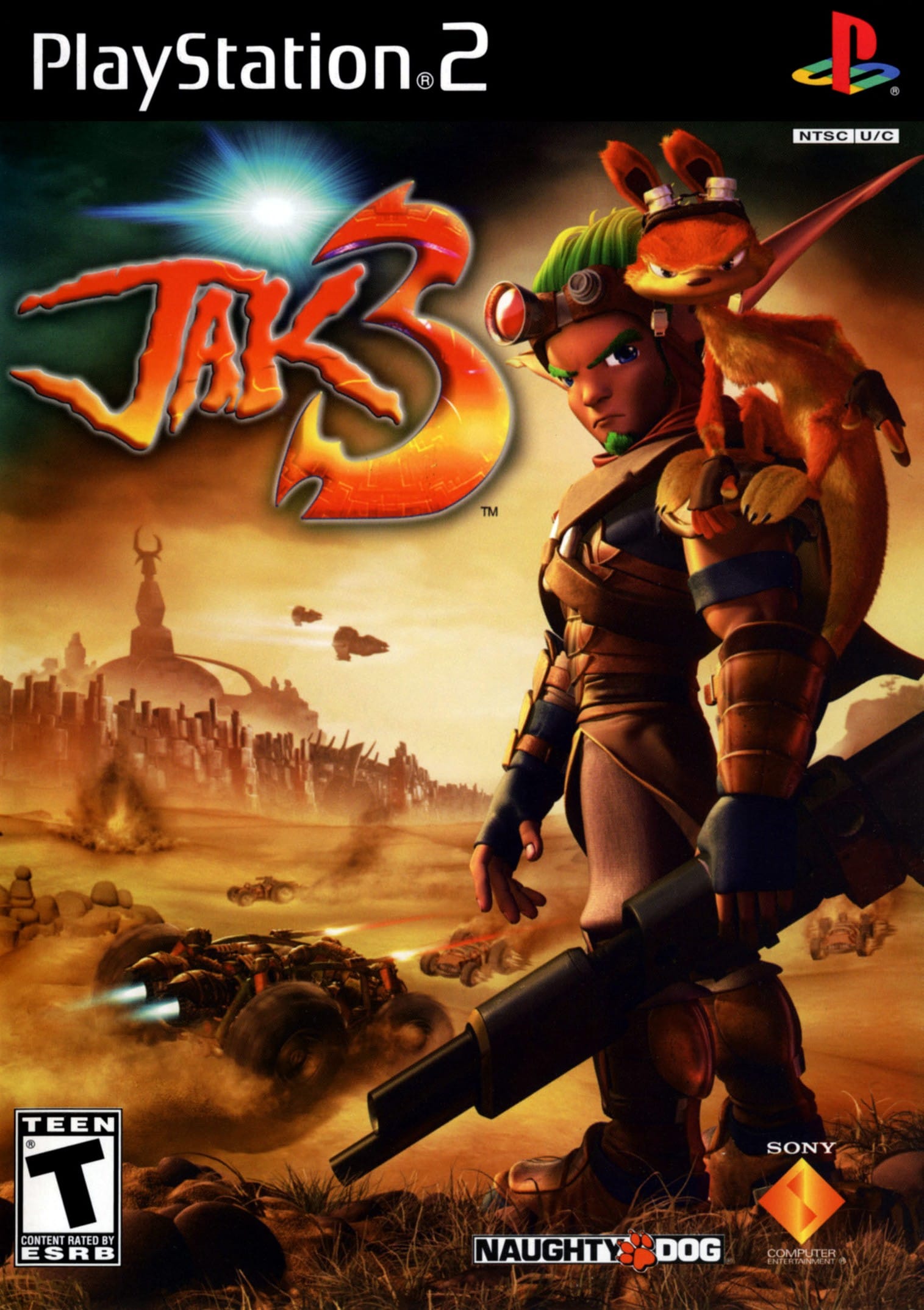
- Developer: Naughty Dog
- Release Date: November 9, 2004
If Jak II was the rebellious, edgy teenage phase, Jak 3 is the well-adjusted adult. Naughty Dog took all the feedback from the second game—the sometimes brutal difficulty, the frustrating missions—and sanded down every single rough edge. The vehicle combat is an absolute blast and breaks up the on-foot action perfectly. And the weapon mods? Forget about it. Being able to upgrade your beloved Peace Maker and Beam Reflexor adds a crazy amount of depth to the combat. The story brings the trilogy to a close with a ton of heart, answering pretty much every lingering question and giving every character a fantastic send-off.
Why It's Worth Playing: Jak 3 is the ultimate power fantasy of the series. It throws so many abilities, weapons, and vehicles at you that you feel unstoppable by the endgame, and that progression is incredibly satisfying. It’s the most accessible and forgiving of the trilogy, making it the perfect entry point for anyone who found Jak II a bit too punishing. The pacing is breakneck, constantly introducing new gameplay ideas before you ever get bored with the old ones. It’s a masterfully crafted conclusion that proves a game can be both epic in scope and relentlessly fun. This is the series firing on all cylinders.
Sly Cooper and the Thievius Raccoonus
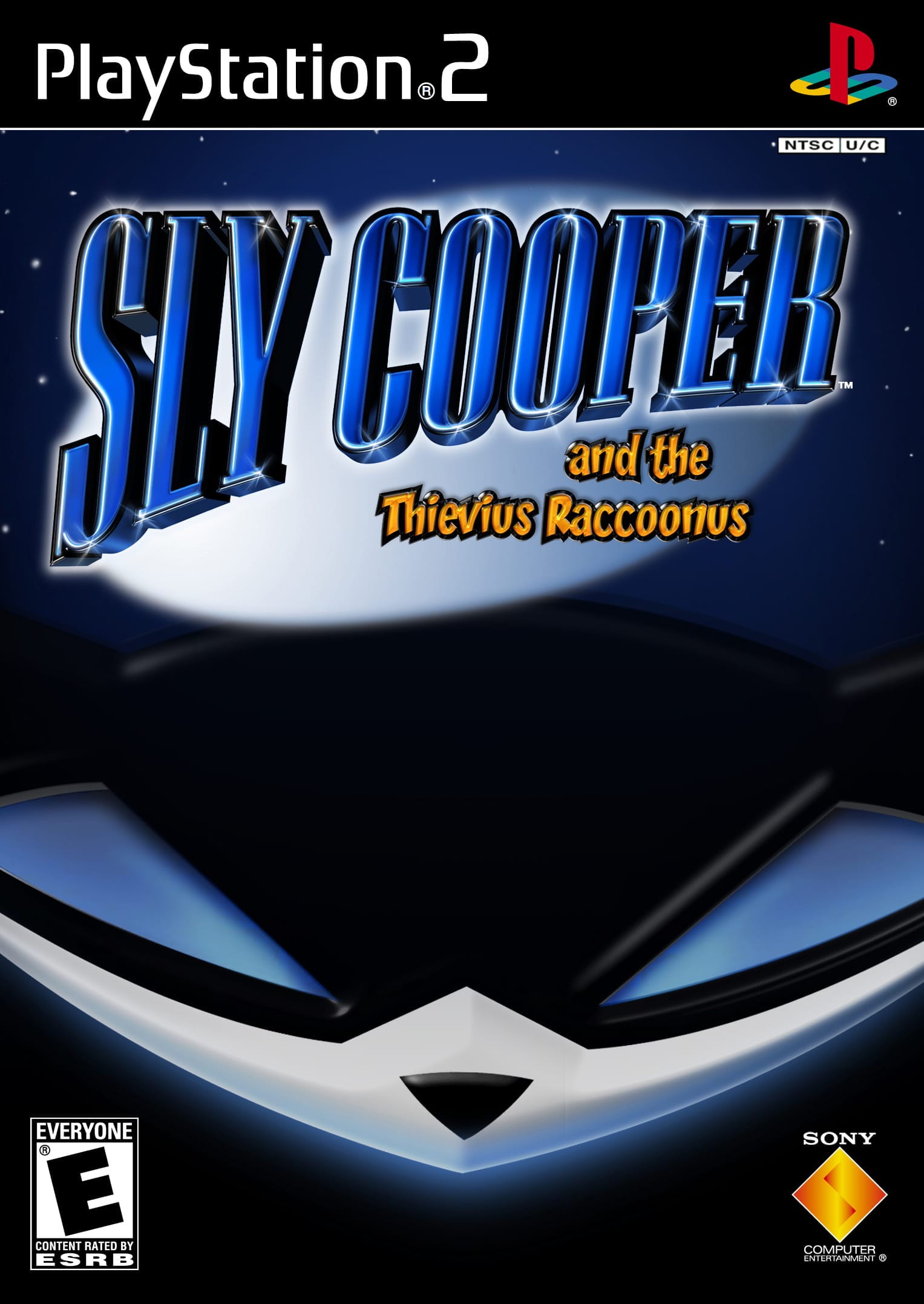
- Developer: Sucker Punch Productions
- Release Date: September 23, 2002
Sly Cooper and the Thievius Raccoonus isn’t just a platformer; it’s a playable cartoon caper. The cel-shaded graphics have aged like a fine wine, giving every frame the look of a living, breathing graphic novel. The gameplay is a masterclass in focused design. This isn’t about combat; it’s about stealth, precision, and timing. Sly is fragile—one hit and you’re back to a checkpoint—so you have to rely on your wits. The levels are linear but incredibly dense with secret paths and optional loot, rewarding careful observation. The boss fights are particularly memorable, each one feeling like a unique puzzle that tests everything you’ve learned.
Why It's Worth Playing: Sly Cooper is an pure example of a platformer with a distinct identity. It oozes charm from every pore, from its jazzy soundtrack to its witty dialogue. The stealth-platforming gameplay is unique and incredibly satisfying, making you feel like a genuine master thief as you outsmart your opponents instead of just overpowering them. It’s a testament to the idea that a game doesn’t need to be a 50-hour epic to be memorable; it just needs a strong, cohesive vision. Sly Cooper is the foundation for one of PlayStation’s most beloved trilogies, and it remains an absolute joy to play.
Sly 2: Band of Thieves
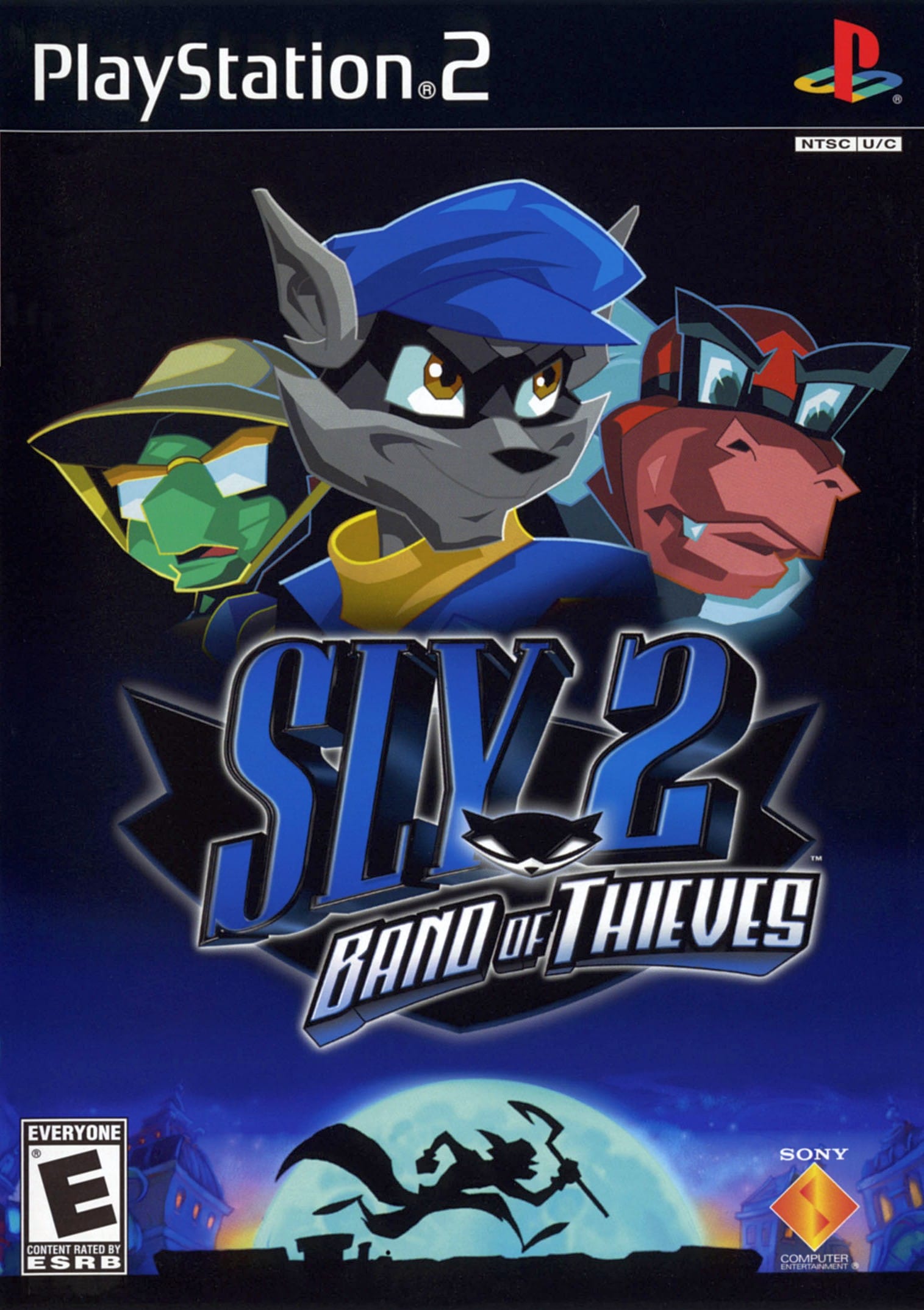
- Developer: Sucker Punch Productions
- Release Date: September 14, 2004
If the first Sly Cooper was a sleek, linear heist film, Sly 2: Band of Thieves is the full-blown season of a prestige TV show. The core of Sly 2 is its multi-phase heists. A typical job isn’t just one mission; it’s a series of expertly paced steps. You’ll start with reconnaissance as Bentley, hack a security system, create a distraction with Murray, and then pull off the main event as Sly. The villainous Contessa remains one of the most genuinely unsettling antagonists in any platformer, and the story takes some surprisingly dark turns. The loot you steal isn’t just for points; it’s used to buy new moves and gadgets, tying progression directly into the thieving fantasy. It’s a deeper, richer, and more ambitious game in every single way.
Why It's Worth Playing: Sly 2 is the pinnacle of the series and a landmark for narrative-driven platformers. The open-world hubs are packed with life and hidden secrets, encouraging exploration in a way the first game didn't. The heist-based mission structure is brilliantly executed, making you feel like a genuine master thief coordinating a complex operation. The character development is top-notch, transforming Murray and Bentley from sidekicks into fully realized protagonists. For many, this is the definitive Sly Cooper experience.
Sly 3: Honor Among Thieves

- Developer: Sucker Punch Productions
- Release Date: September 26, 2005
How do you top a masterpiece like Sly 2? You go bigger—much bigger. Sly 3: Honor Among Thieves operates on the principle that more is more. The Cooper Gang is no longer a trio; it’s a full-blown crew of specialists recruited for the ultimate job: breaking into Sly’s family vault. One minute you’re flying a biplane as the fearless Panda King, the next you’re navigating a submarine through underwater mines, or brawling through hordes of enemies as the Guru. The set pieces are bigger, the heists are more complex, and the addition of a first-person view for certain sections is a nice touch. The story brings the trilogy to a close with a ton of heart, focusing on themes of legacy, family, and what it truly means to be a thief.
Why It's Worth Playing: Sly 3 is the blockbuster finale the series deserved. The sheer variety of gameplay ensures you're never doing the same thing for too long, and the expanded roster makes the world feel larger than ever. While it may lack the tight, focused narrative of Sly 2, it more than makes up for it with pure, unadulterated fun and ambition. It's a fitting and emotional conclusion to the trilogy that gives every character—old and new—a moment to shine. If you want to see a series go out on top, this is how you do it.
Klonoa 2: Lunatea’s Veil
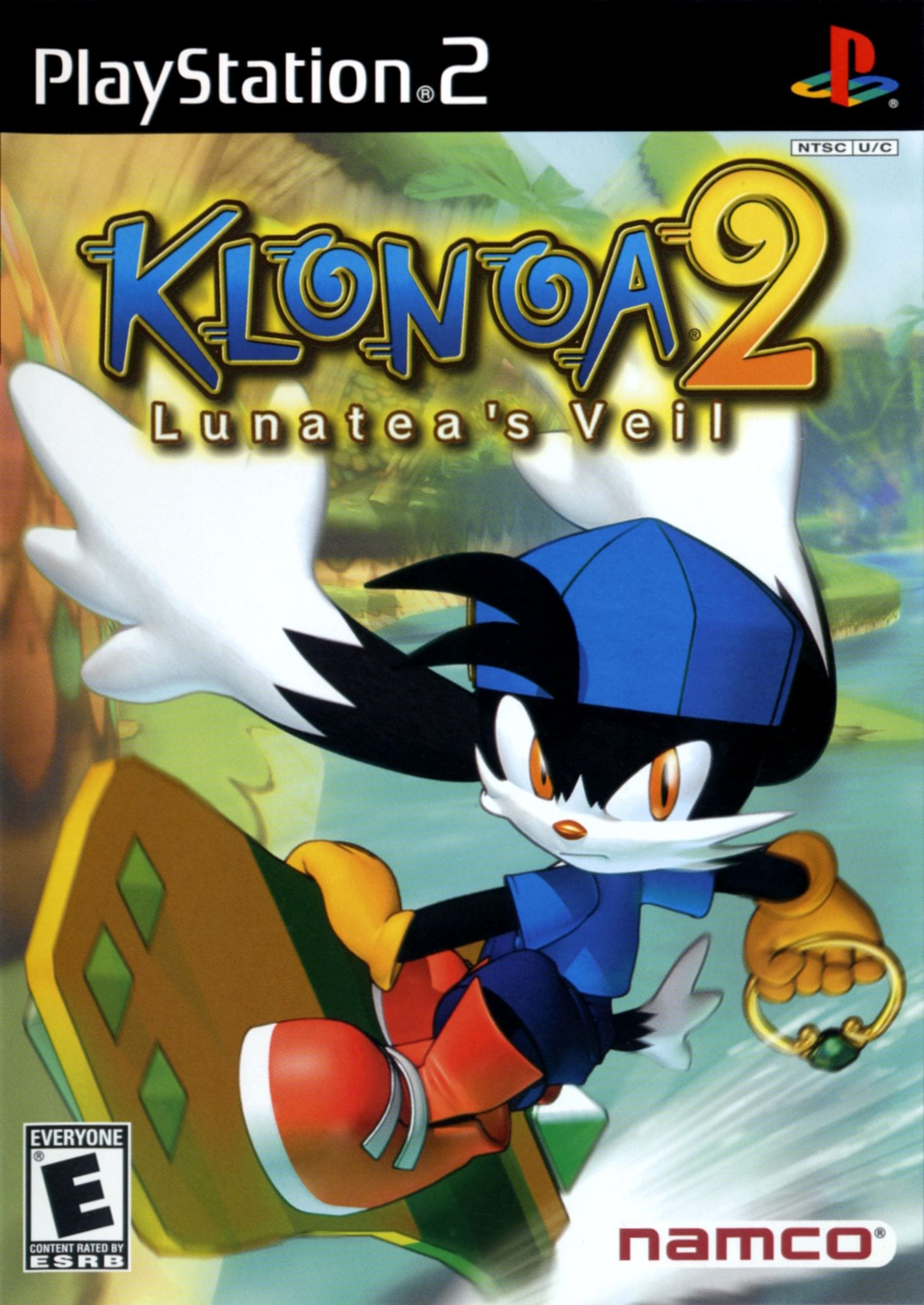
- Developer: Namco
- Release Date: July 25, 2001
Klonoa 2: Lunatea’s Veil isn’t just a platformer; it’s a masterpiece of 2.5D artistry. The core mechanic is your Wind Bullet, a ring that lets you grab enemies. You can then use them as projectiles, as a double-jump boost by holding them above your head, or to solve environmental puzzles. Levels constantly introduce new ideas without ever overstaying their welcome. The visuals are a stunning blend of vibrant colors, expressive character designs, and pre-rendered backgrounds that have aged like a fine wine. This is a game that isn’t afraid to get emotional, and its story, while simple, delivers a powerful, heartfelt punch that will stick with you long after the credits roll.
Why It's Worth Playing: Klonoa 2 is worth playing because it is platforming perfection. It’s a masterclass in level design, visual storytelling, and audio-visual presentation. The gameplay is accessible enough for anyone to pick up but has hidden depths for speedrunners and completionists. In a genre often defined by its icons, Klonoa 2 stands tall as one of the most beautifully crafted, emotionally resonant, and purely fun experiences ever created. It’s not just one of the best PS2 platformers; it’s one of the best platformers, period.
Ape Escape 2
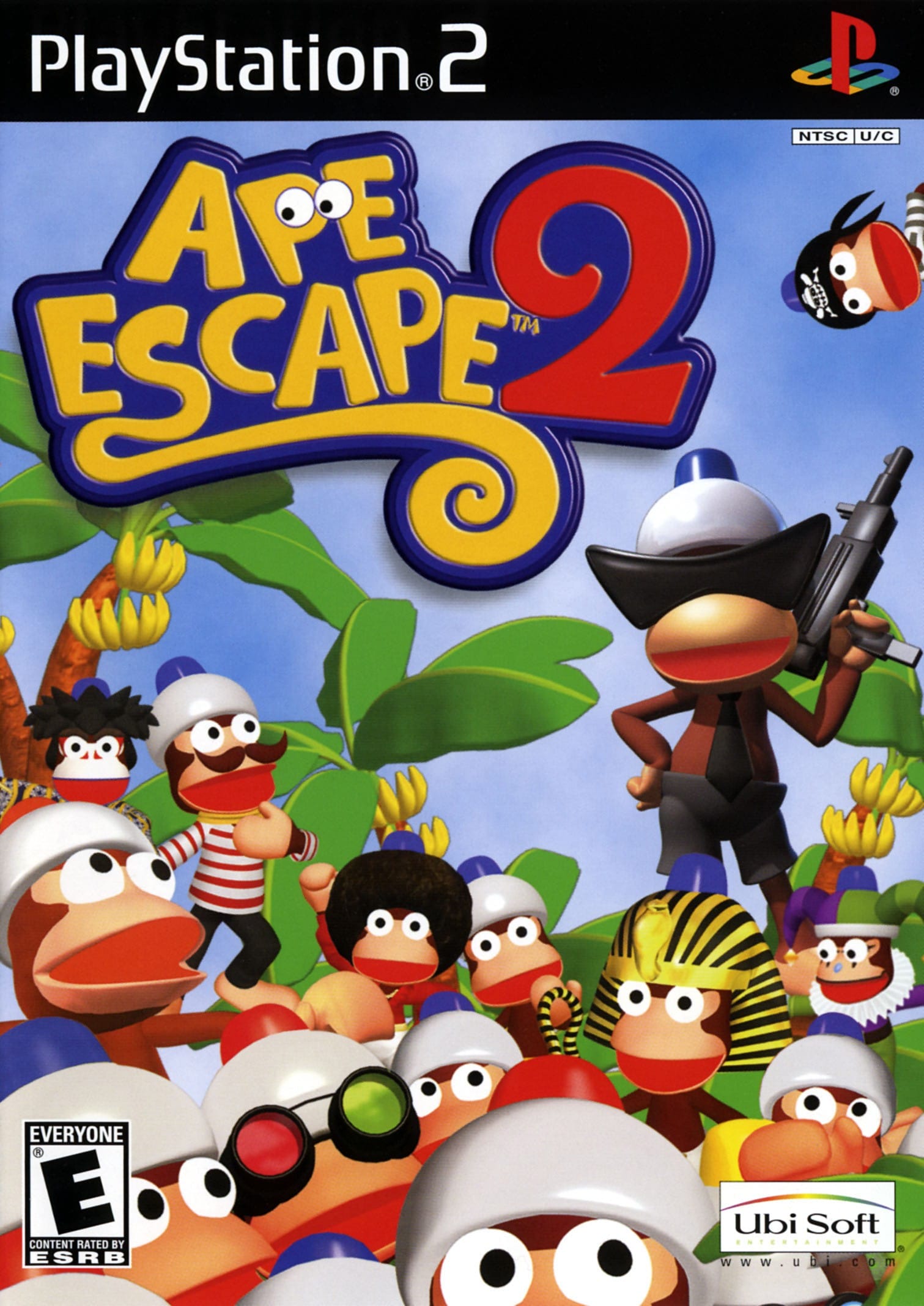
- Developer: SCE Japan Studio
- Release Date: September 17, 2002
While the first Ape Escape on PS1 was revolutionary, Ape Escape 2 is where the concept truly hit its stride. This isn’t about combat; it’s a game where you chase down monkeys with a variety of gadgets. Each level is a vibrant, themed playground designed around a specific gadget. You’ll use your RC Car to navigate tight ducts, your Slingback Shooter to stun monkeys from a distance, and the iconic Sky Flyer to zip across gaps. The monkeys themselves are the real stars, each with unique personalities and hilarious escape strategies. Catching them all is an addictively satisfying loop that constantly introduces new wrinkles to keep you on your toes.
Why It's Worth Playing: Ape Escape 2 never takes itself seriously and is all the better for it. The core gameplay of chasing down cheeky monkeys is as unique and fun today as it was two decades ago. It’s a masterclass in using the DualShock 2 controller, with each gadget feeling perfectly mapped to the sticks and buttons. If you're tired of gritty, dark games and want something that will just make you smile, this is your perfect antidote. It’s a timeless classic that deserves a spot in every collection.
Ape Escape 3
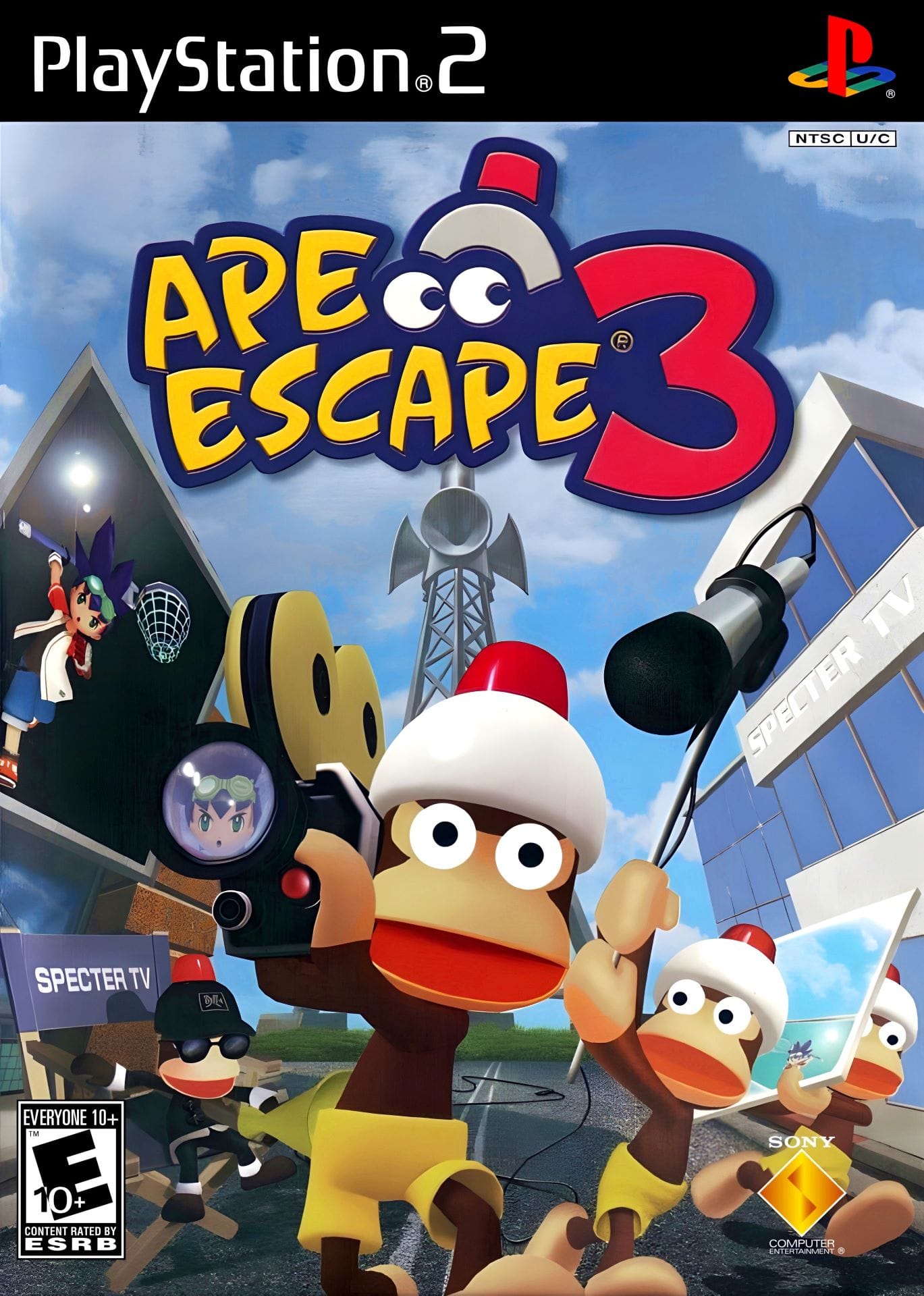
- Developer: SCE Japan Studio
- Release Date: June 30, 2005
Ape Escape 3 is the series firing on all cylinders, taking the fantastic monkey-catching core and wrapping it in a hilarious parody of pop culture and television tropes. Each stage is now a riff on a different genre—a wild west spoof, a sentai robot battle—and the attention to detail is brilliantly funny. The biggest and best new addition is the Transformation Gear. This lets our heroes, Kei and Yumi, morph into different costumes that grant them unique abilities. Become a Knight for heavy-duty smashing, turn into a Cowboy to lasso monkeys from afar, or transform into a Ninja for super-fast sprinting and wall jumps. It’s a genius mechanic that adds a fantastic puzzle layer to the monkey hunting.
Why It's Worth Playing: Ape Escape 3 takes everything that made the second game great and turns the creativity dial up to eleven. The TV theme is a fantastic vehicle for wild, varied level design, and the transformation mechanic is an absolute game-changer that keeps the gameplay fresh from start to finish. It’s one of the most visually inventive and consistently hilarious games on the PS2. While it sadly marked the end of the mainline series, it went out on the highest note imaginable.
Rayman 2: Revolution
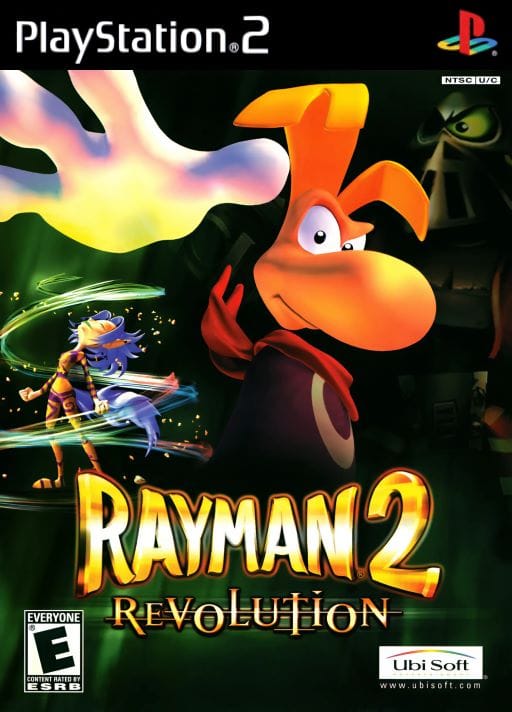
- Developer: Ubi Pictures
- Release Date: December 22, 2000
Rayman 2: Revolution isn’t just a simple port of the acclaimed Rayman 2: The Great Escape; it’s a full-blown director’s cut packed with new content. With the new 3D hub world, you can now explore a central island to find the portals that lead to your next adventure. There’s now an option for full English (and other languages) voice acting, though you can still choose the classic “Raymanian” gibberish if you prefer. This version also features new levels, bosses, and a revamped progression system where Rayman can upgrade his powers using collected Lums. Visually, the PS2’s power was leveraged for sharper graphics, more vibrant colors, real-time shadows, improved lighting, and particle effects.
Why It's Worth Playing: Rayman Revolution is absolutely worth playing as the most content-rich version of a stone-cold classic platformer. Yes, the hub world can be divisive, and the new upgrade system makes the early game slower, but these are interesting experiments that offer a fresh experience even for veterans of other versions. With a brilliant mix of platforming and environmental puzzles, the core gameplay remains some of the best the genre has ever offered. It’s a must-play for anyone who missed Rayman 2 the first time around and wants to see what a polished, creative 3D platformer looks like outside of the Mushroom Kingdom.
Rayman 3: Hoodlum Havoc
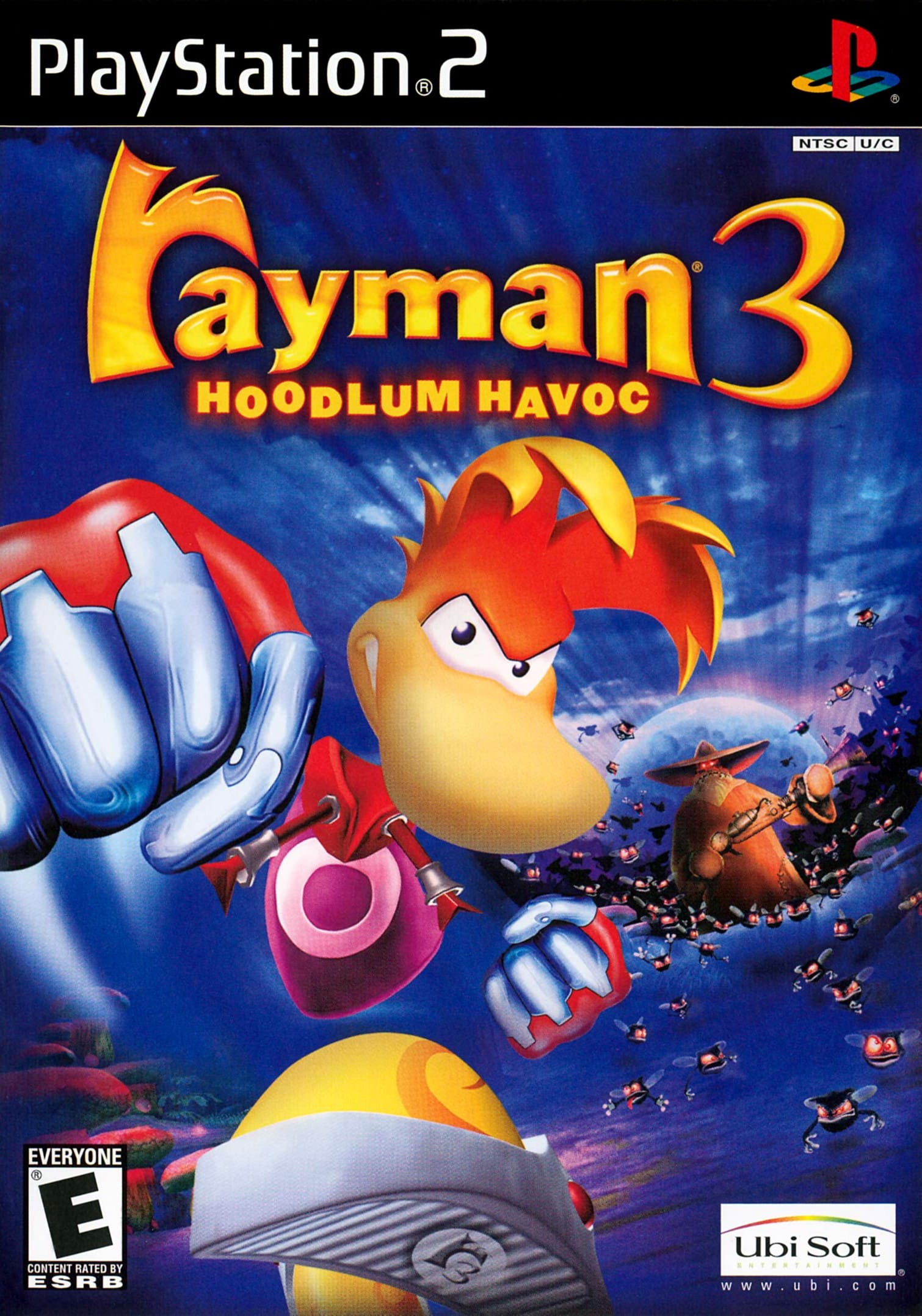
- Developer: Ubi Soft
- Release Date: March 4, 2003 (NA)
Rayman 3 is the black sheep of the trilogy, and that’s precisely what makes it so fascinating. It’s completely unhinged, with a constant stream of fourth-wall-breaking jokes and surreal humor. With the controversial LockJaw mechanic, you can latch onto enemies and launch them into other foes or specific objects, creating massive chain reactions for huge point bonuses. The levels are linear but wildly inventive, constantly throwing new gimmicks at you, from riding a screaming missile to surfing on a tidal wave of syrup. The soundtrack is a funky, electronic masterpiece that perfectly complements the game’s off-the-wall vibe. It’s a game that is utterly confident in its own bizarre identity.
Why It's Worth Playing: Don't write off Rayman 3 because it's different: embrace its audacious weirdness. The combat, once you master the LockJaw, is incredibly satisfying and rewards creative play. The level design is some of the most varied and visually creative of the entire PS2 era, with each world offering a completely unique aesthetic and gameplay hook. It’s shorter and more linear than Rayman 2, but that also means it has absolutely zero filler. This is a concentrated dose of platforming madness that stands as a unique, hilarious, and often overlooked gem. IMO, its sheer personality makes it a must-play.
Pac-Man World 2
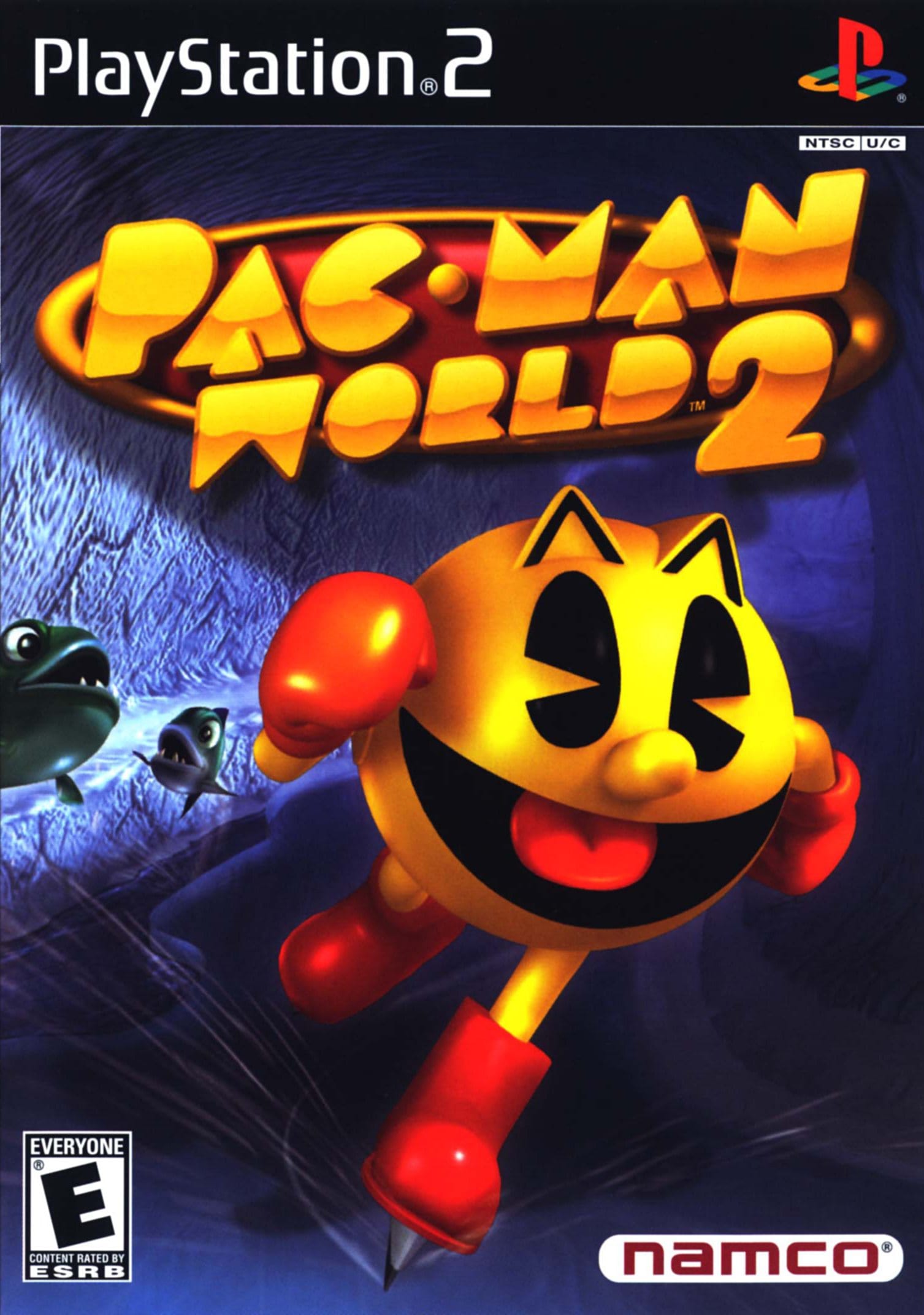
- Developer: Namco
- Release Date: February 25, 2002
Pac-Man World 2 took the core iconography of the arcade classic and built a shockingly competent and charming adventure around it. The game constantly introduces new mechanics, from underwater swimming sections to ice-sliding puzzles, and it even incorporates classic Pac-Man arcade mazes as special challenge stages. The boss fights are a particular highlight, each one a creative twist on a classic ghost—like using the Rev Roll to knock a sumo-suited Blinky out of the ring. The vibrant, cartoonish visuals hold up beautifully, and the soundtrack is an upbeat, energetic delight.
Why It's Worth Playing: Pac-Man World 2 is a masterclass in how to adapt a classic IP. It respects its source material while confidently carving out its own identity as a solid, standalone platformer. The gameplay is tight and responsive, the level design is creative and varied, and it has that elusive "one more try" quality that makes you want to hunt down every last collectible. It's a genuinely great game that has nothing to do with the Pac-Man name on the box. If you skipped this because it looked like a cheap license, you've been missing out on one of the system's most pleasant surprises.
Pac-Man World 3
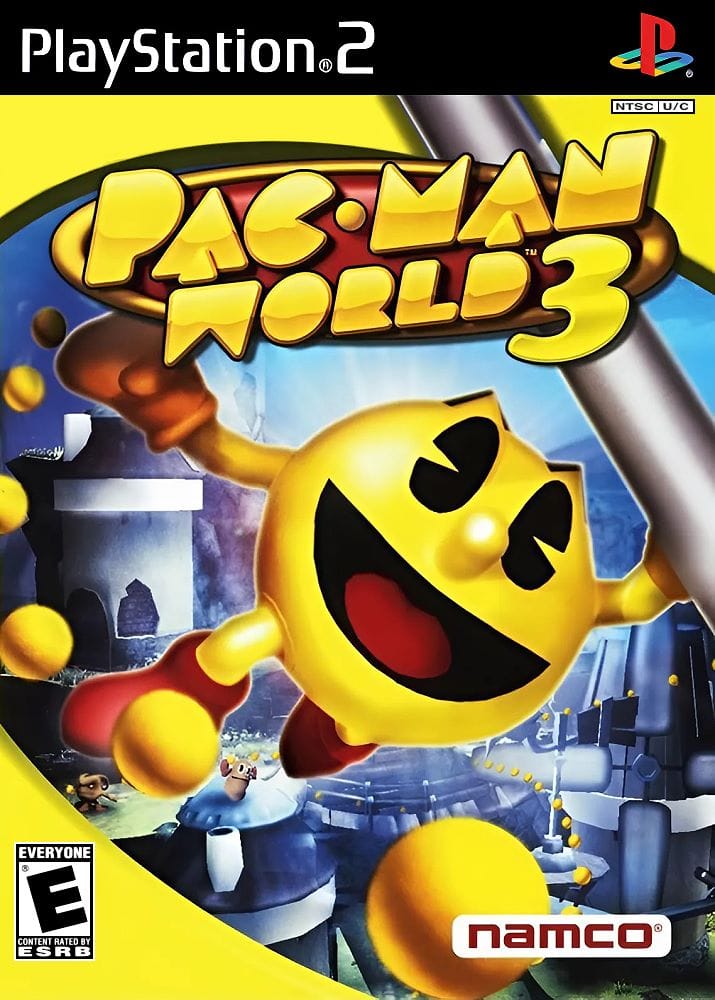
- Developer: Blitz Games
- Release Date: November 16, 2005
Pac-Man World 3 is the series’ awkward teenage phase, where it tried on a bunch of new styles to see what fit. Gone is the sunny, arcade-inspired platforming of World 2; in its place is a darker, more narrative-driven adventure that leans hard into a gothic, almost steampunk aesthetic. Pac-Man gets a new Power Pellet Bar that lets him unleash ghost-bashing combos, and there’s even a weird, clunky lock-on targeting system. The soundtrack, however, is a bizarrely awesome mix of funky basslines and moody industrial tones that you have to hear to believe.
Why It's Worth Playing: Pac-Man World 3's darker aesthetic is actually pretty cool and gives the game a unique look among PS2 platformers. The ghost-based puzzle mechanics, while imperfect, offer a clever nod to the franchise's roots. While it lacks the focused, joyful design of its predecessor, it's a shorter, more experimental experience that's worth a look for fans of the series who want to see a different, weirder take on the character.
Crash Bandicoot: The Wrath of Cortex
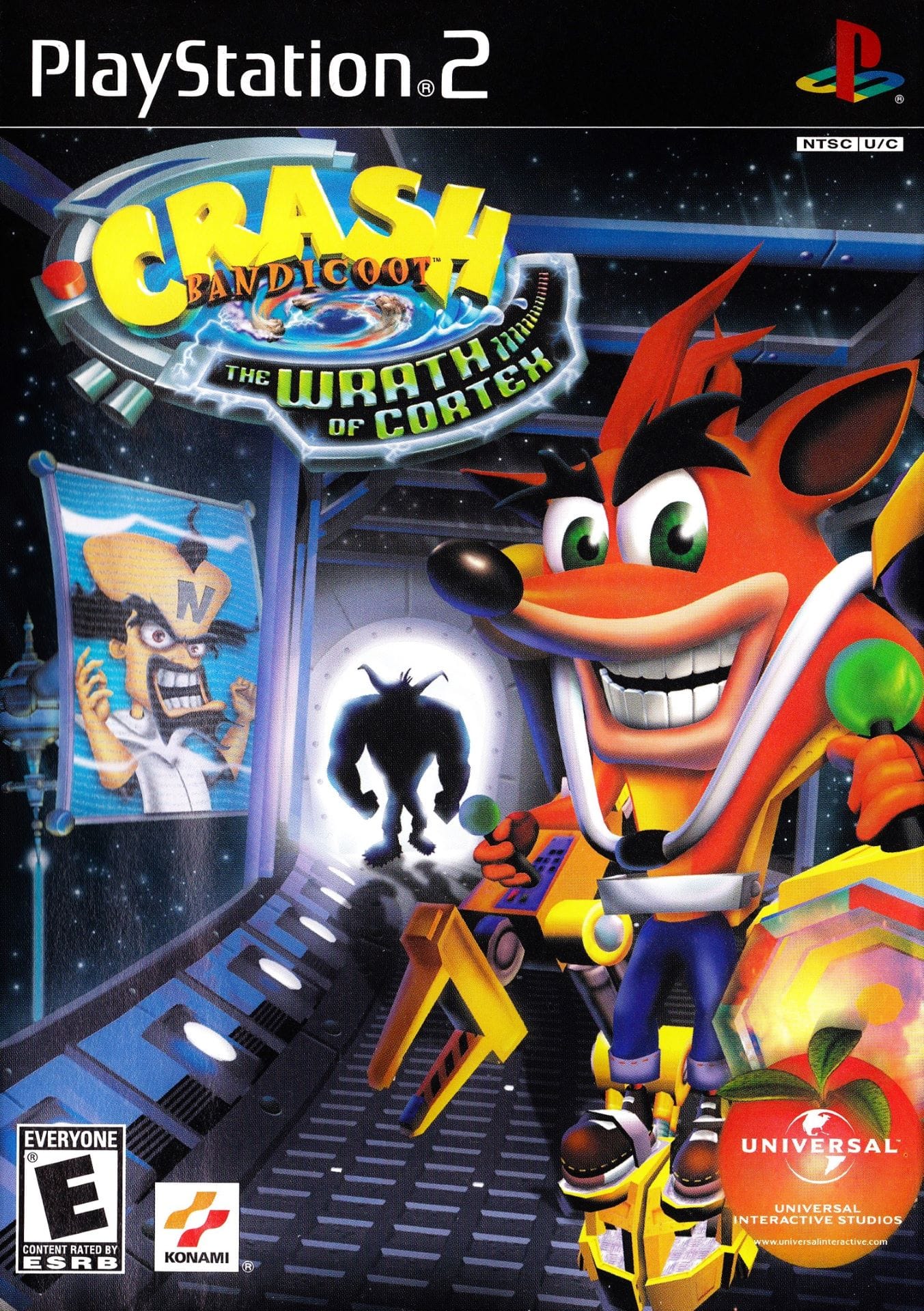
- Developer: Traveller’s Tales
- Release Date: October 29, 2001
Let’s get the obvious out of the way first: after the success of the Crash trilogy on the PS1, Crash Bandicoot: The Wrath of Cortex had impossibly big shoes to fill. The core gameplay is the same as before. You’re still running down linear paths, smashing crates, and spinning into enemies. The controls are… almost right. They’re floatier than the originals, and the physics feel just a little off, which can make precision platforming more frustrating than it should be. The game continues the classic formula, complete with new Elemental villains and a variety of vehicle sections.
Why It's Worth Playing: Look, Wrath of Cortex is not the best Crash game. But it’s also not the unplayable mess some make it out to be. At its heart, it’s still a Crash Bandicoot game, and that formula is inherently fun. When it focuses on pure platforming, it can be genuinely enjoyable. It’s a comfort food game—a familiar taste for fans of the classic series.
Super Monkey Ball Deluxe
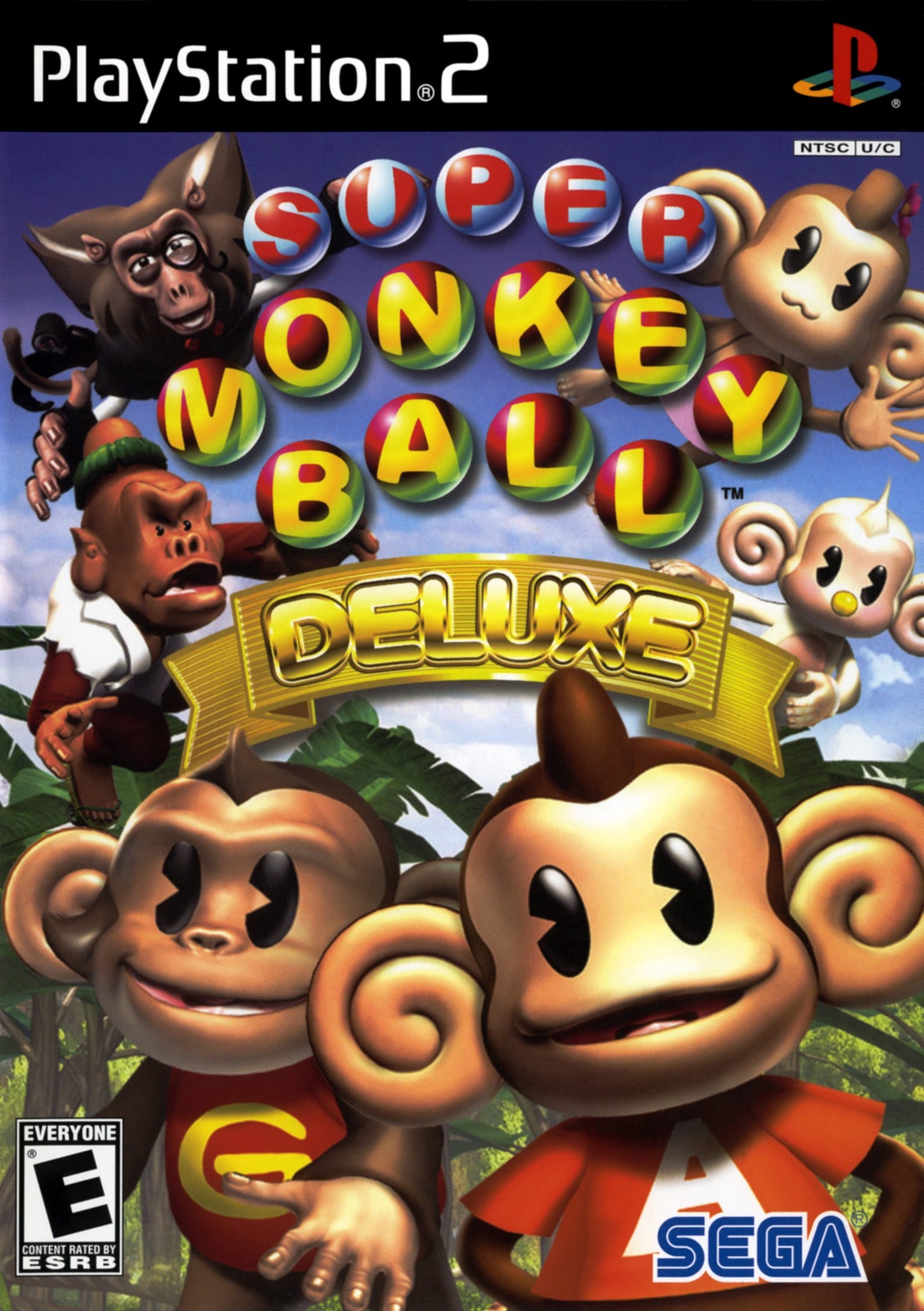
- Developer: Amusement Vision
- Release Date: March 15, 2005
Super Monkey Ball Deluxe combines the brutally brilliant stages from Super Monkey Ball and Super Monkey Ball 2 into one massive, content-packed experience. This isn’t about jumping on enemies or collecting shiny things; the platforming here is the stage itself. The concept is deceptively simple. Get your monkey in a ball from the start to the goal. That’s it. But the execution is where legends are made—and controllers are thrown. You’ll spend the first few worlds just learning to move in a straight line without plummeting into the abyss. The party game mode is a legendary suite of mini-games—Monkey Race, Monkey Fight, Monkey Bowling—that alone justifies the purchase for local multiplayer chaos.
Why It's Worth Playing: Super Monkey Ball Deluxe is worth playing because it is a masterpiece of minimalist game design. There are no stories, no cutscenes, no power-ups—just you versus the physics of a tilting stage. The satisfaction of finally nailing a stage that's killed you two dozen times is a feeling few other games can match. The sheer value is also insane, offering hundreds of stages and a killer multiplayer package. It's a unique, timeless, and utterly essential PS2 title that proves sometimes the simplest concepts, executed perfectly, are the most enduring. Just maybe keep a spare controller handy. You've been warned.
Ty the Tasmanian Tiger
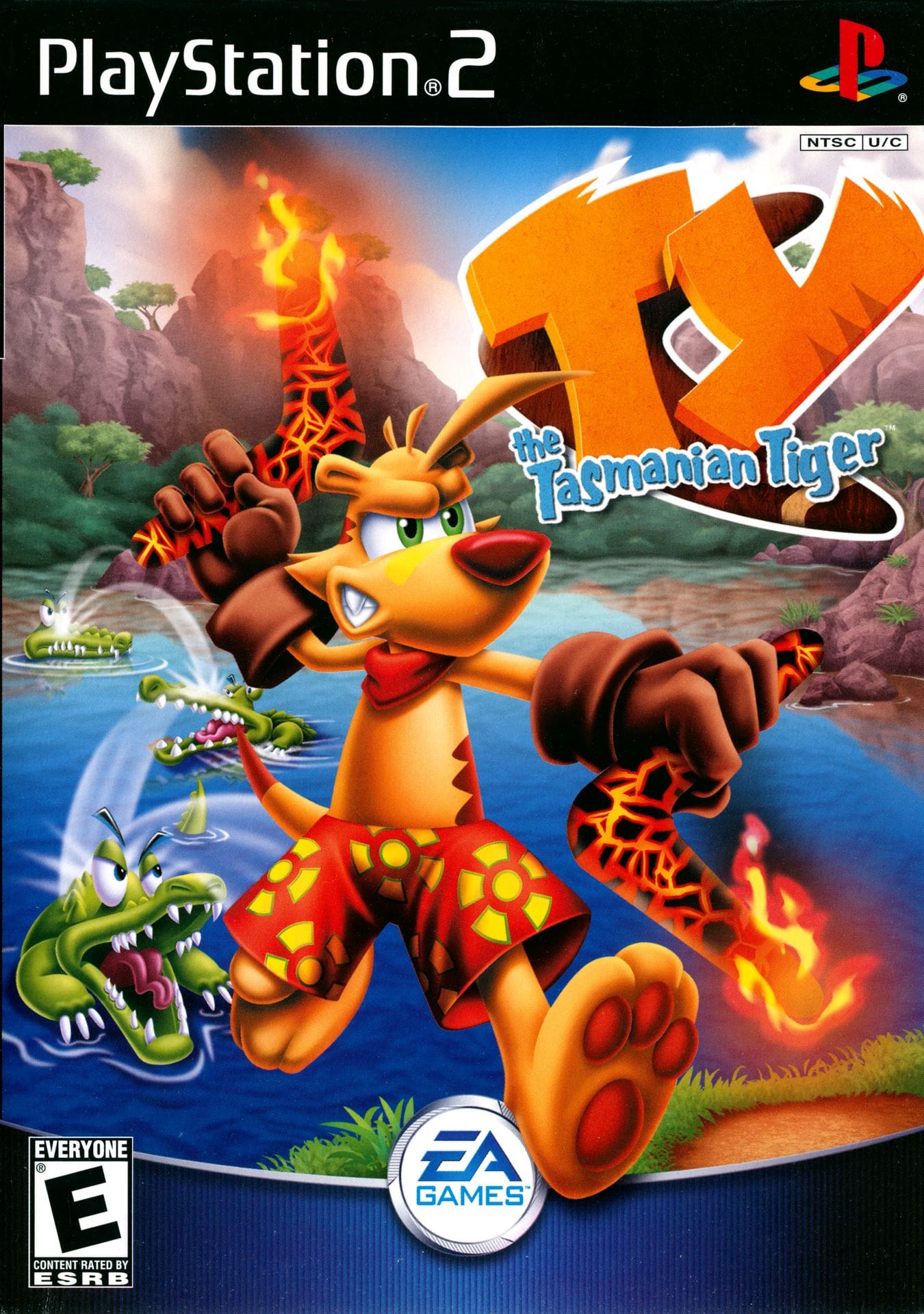
- Developer: Krome Studios
- Release Date: September 23, 2002
Ty the Tasmanian Tiger is like someone took a classic Rareware collectathon, dumped it in the Outback, and slapped a pair of boomerangs on it. You explore large, open hub worlds to find portals to individual levels, each packed with collectibles to find, puzzles to solve, and enemies to bonk. The big hook, of course, is the boomerangs. Ty starts with a standard rang but quickly builds an arsenal of specialized ones—flame rangs, frosty rangs, zoomerangs—that are used for combat, solving environmental puzzles, and fetching far-off goodies. It doesn’t try to reinvent the wheel; it just wants to be a fun, lighthearted adventure, and it absolutely nails that vibe.
Why It’s Worth Playing
Ty the Tasmanian Tiger is worth playing because it’s a perfectly executed dose of nostalgia. It captures the spirit of early 3D platformers with genuine affection and skill. The boomerang-based gameplay is a unique and satisfying twist on the genre’s combat and puzzle-solving, and the Australian setting gives it a personality all its own. It’s not the most challenging or groundbreaking game on this list, but it’s consistently fun, charming, and polished. If you have any love for collectathons like Banjo-Kazooie, this is an absolute must-play. It’s a sunny, cheerful adventure that’s guaranteed to put a smile on your face.
Ty the Tasmanian Tiger 2: Bush Rescue

- Developer: Krome Studios
- Release Date: October 12, 2004
Bush Rescue takes the solid foundation of the original and goes absolutely massive with it. This isn’t just about collecting eggs anymore; you’re taking on missions, helping locals, and genuinely feeling like a part of a larger, living world. The biggest and best addition is the Bush Rescue vehicle. This transforming truck serves as your mobile headquarters, allowing you to traverse the huge open world seamlessly. And I mean huge. The hub worlds are vastly larger and more open-ended, encouraging real exploration. The mission-based structure gives the game a fantastic sense of pace and variety—one minute you’re doing a traditional platforming level, the next you’re in a turret section defending a town, or racing through the desert in a buggy. The boomerang arsenal gets even bigger and more creative, and the whole game feels more polished and confident.
Why It's Worth Playing: Ty 2 takes the charming Aussie vibe of the first game and builds a bigger, better, and more varied adventure around it. The mission-based structure and the open-world hubs make it feel less like a simple collectathon and more like a genuine action-adventure game. The vehicle sections are actually fun (a rarity in platformers), and the sheer amount of content will keep you busy for ages. It’s a more ambitious and complete experience than its predecessor in almost every way.
Kao The Kangaroo: Round 2
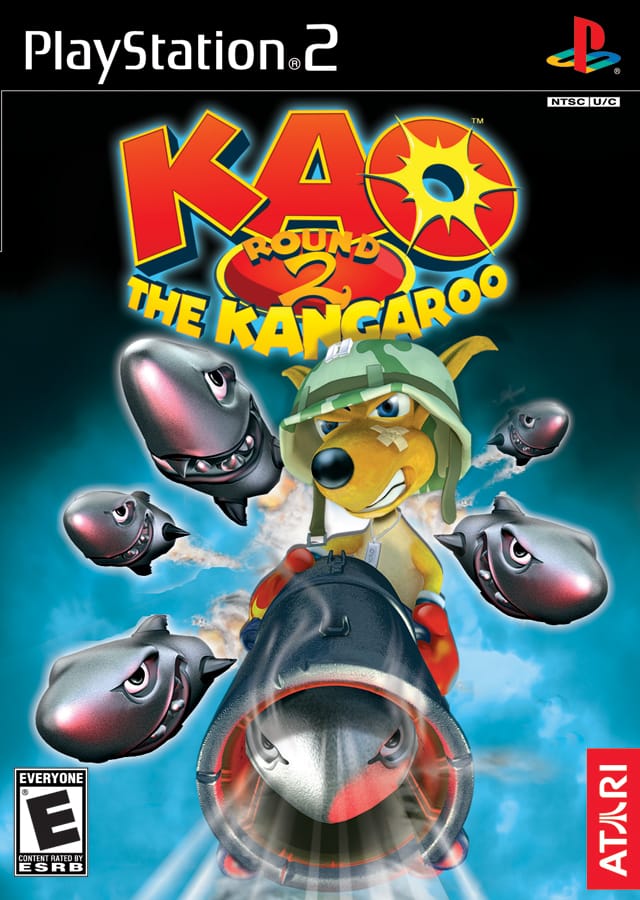
- Developer: Tate Interactive
- Release Date: April 15, 2005
Ever feel like platforming mascots peaked in the early 2000s? If so, Kao The Kangaroo: Round 2 is here to validate that feeling—and maybe surprise you. From beaver forests to thunder mountains and treasure islands, each environment bursts with color and personality. The gameplay is pure 3D platforming comfort food—think Jak and Daxter but with a lighter tone and more emphasis on exploration and collection. You’ll run, jump, and use a variety of combat moves to take down enemies, solve puzzles, and even hop on a snowboard for some variety.
Why It’s Worth Playing: Kao The Kangaroo: Round 2 is a time capsule of early 2000s platforming joy. It’s unapologetically nostalgic, with its bright visuals, catchy music, and straightforward gameplay. It’s not trying to reinvent the wheel—it just wants to give you a damn good time. And hey, where else can you punch baddies as a kangaroo?
I-Ninja
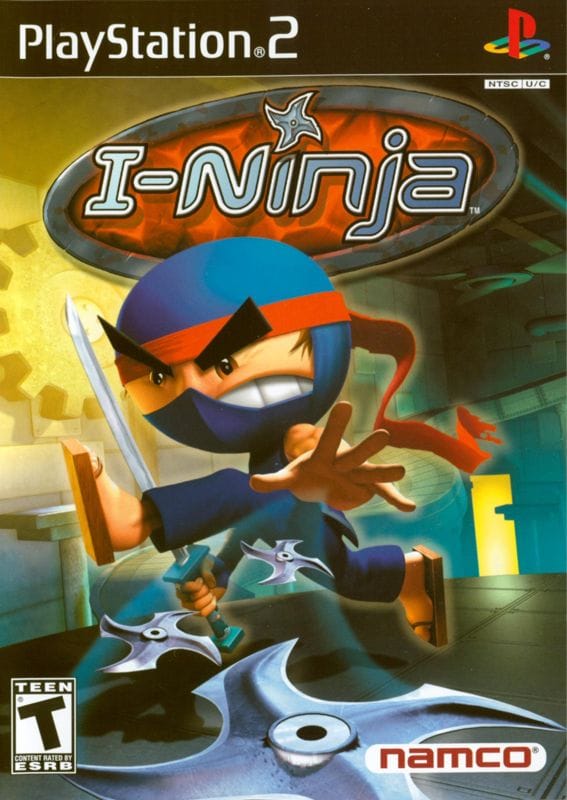
- Developer: Argonaut Games
- Release Date: November 18, 2003
If you’re a fan of quirky, creative, and challenging platformers, you absolutely need to know about I-Ninja. The game puts you in the tiny shoes of a pint-sized ninja with a comically oversized head, on a quest to defeat an evil master. But what truly makes it shine is the brilliant movement system. The unique grappling hook and wall-running mechanics made traversal an absolute joy, transforming the levels into a fluid playground. It also featured a surprisingly deep combat system and some truly inventive level design that kept you on your toes. It’s a classic example of a hidden gem from the early 2000s that just never got the attention it deserved.
Why It's Worth Playing: I-Ninja is an exhilarating blend of platforming precision and acrobatic combat that feels fresh even today. The fluidity of its movement, combining rapid wall-running with satisfying grappling hooks, makes every jump and swing feel incredibly rewarding. The combat is far more robust than you’d expect from a platformer, giving you a powerful sense of progression as you unlock new moves. For anyone who loves a game that's easy to pick up but challenging to master, this is a perfect fit. It's a testament to the creativity of a studio that dared to be different, and it's an experience that’s just as much fun now as it was then.
SpongeBob SquarePants: Battle for Bikini Bottom
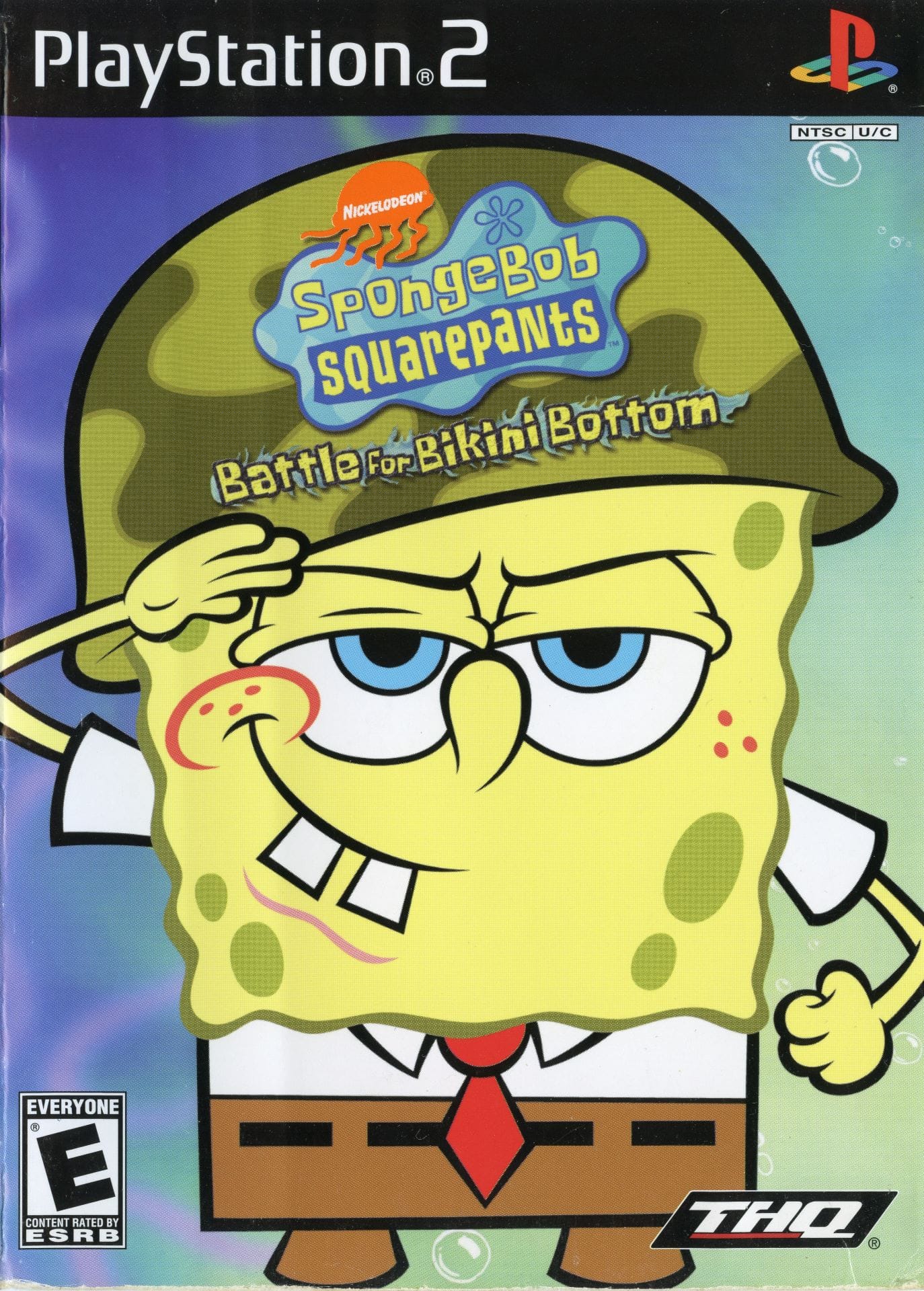
- Developer: Heavy Iron Studios
- Release Date: October 29, 2003
Who would’ve thought that a game based on a cartoon about a talking sponge would become one of the most beloved cult classics of the PS2 era? Battle for Bikini Bottom is a throwback to classic collectathons. Each character feels unique: SpongeBob uses bubble-based attacks and maneuvers, Patrick throws objects like watermelons and freeze fruits, and Sandy Cheeks? Well, she’s basically the easy mode character with her lasso that can one-shot enemies and glide across gaps. The level design is bursting with creativity, taking you to iconic locations like Jellyfish Fields, Rock Bottom, and the Kelp Forest, each filled with platforming challenges, puzzles, and that signature SpongeBob humor.
Why It’s Worth Playing: Battle for Bikini Bottom captures the spirit of the show perfectly, from its humor to its vibrant world, and it’s a solid 3D platformer in its own right. While the 2020 remake (Rehydrated) offers a visual upgrade and some restored content, the original PS2 version has a janky charm that many fans still prefer. The game has also fostered a dedicated speedrunning community, a testament to its enduring appeal. If you’re a fan of SpongeBob or just love collectathons with personality, this is an essential play.
Vexx
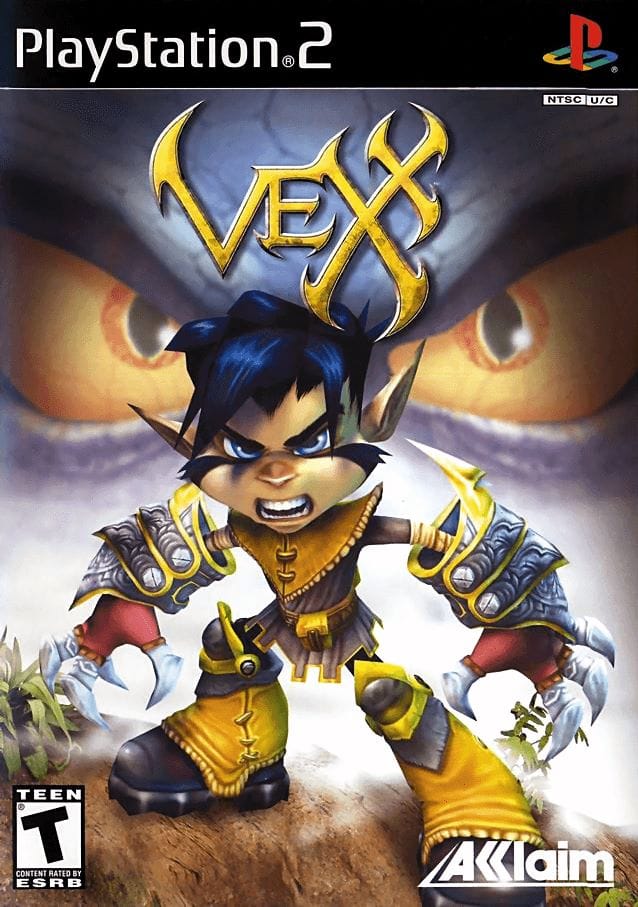
- Developer: Acclaim Studios Austin
- Release Date: February 11, 2003
Vexx throws you into the worn-out war talons of Vexx, a young hero seeking revenge against the evil Dark Yabu for murdering his grandfather. The setup is classic edgy early-2000s fare. You explore nine sprawling, nonlinear worlds, hunting for Wraithhearts to progress. The platforming itself is surprisingly robust—Vexx can run, jump, climb, swim, and unleash a combo-based combat system with his Astani War Talons that feels satisfyingly weighty. The levels are massive and packed with challenges, from precision jumps to environmental puzzles, and even mini-games like ring races and tile-smashing contests. When it works, it works. The satisfaction of nailing a tricky jump or finally grabbing that elusive Wraithheart is real.
Why It’s Worth Playing: Vexx is worth playing as a time capsule of ambitious, messy, early-2000s game design. It’s a game that tries so hard to compete with the giants of the genre that it sometimes forgets to be fun, but there’s a raw charm to its ambition. If you’re a masochistic platforming fan who loves a challenge and can look past janky cameras and brutal difficulty, you’ll find a deeply satisfying experience here. It’s not for everyone, but those who click with it will discover one of the PS2’s most underrated and contentious cult classics.
Tokobot Plus: Mysteries of the Karakuri
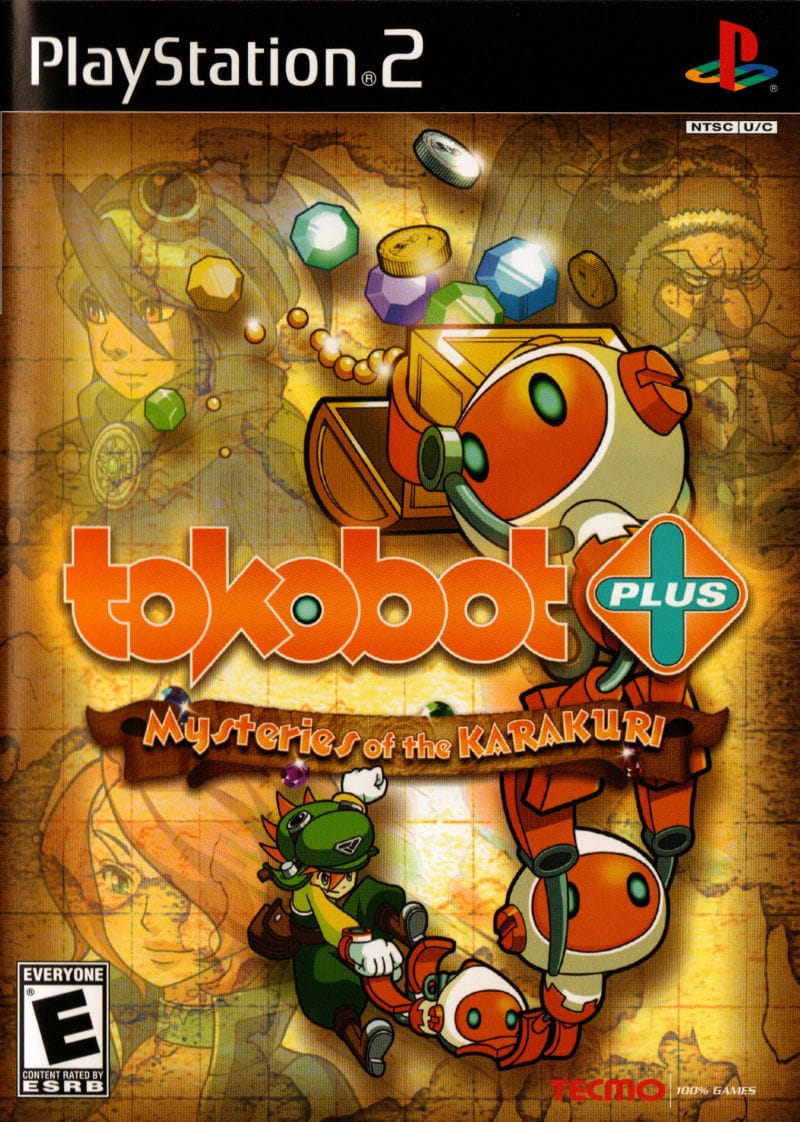
- Developer: Tecmo
- Release Date: October 24, 2006
Tokobot Plus: Mysteries of the Karakuri is an expanded port of the 2005 PSP game Tokobot, adding new levels, tweaked mechanics, and a handful of secrets. You play as Bolt, a young explorer who stumbles upon a group of ancient robots called Tokobots—small, mechanical helpers who imprint on him and follow his every command. The gameplay revolves around Karakuri combinations, where you direct your Tokobots to form specific structures like ladders, bridges, or attack formations to solve puzzles and defeat enemies. The story is lighthearted, the voice acting is cheerfully over-the-top, and the core mechanic of orchestrating your robot squad remains uniquely engaging.
Why It’s Worth Playing: Tokobot Plus is a charming game that's a perfect fit for a lazy afternoon. Its puzzle-centric gameplay stands out in a genre often dominated by combat or exploration, and the Karakuri mechanics offer genuine moments of brilliance amid the jank. Despite its flaws, it’s a fascinating glimpse into Tecmo’s willingness to experiment.
Pitfall: The Lost Expedition
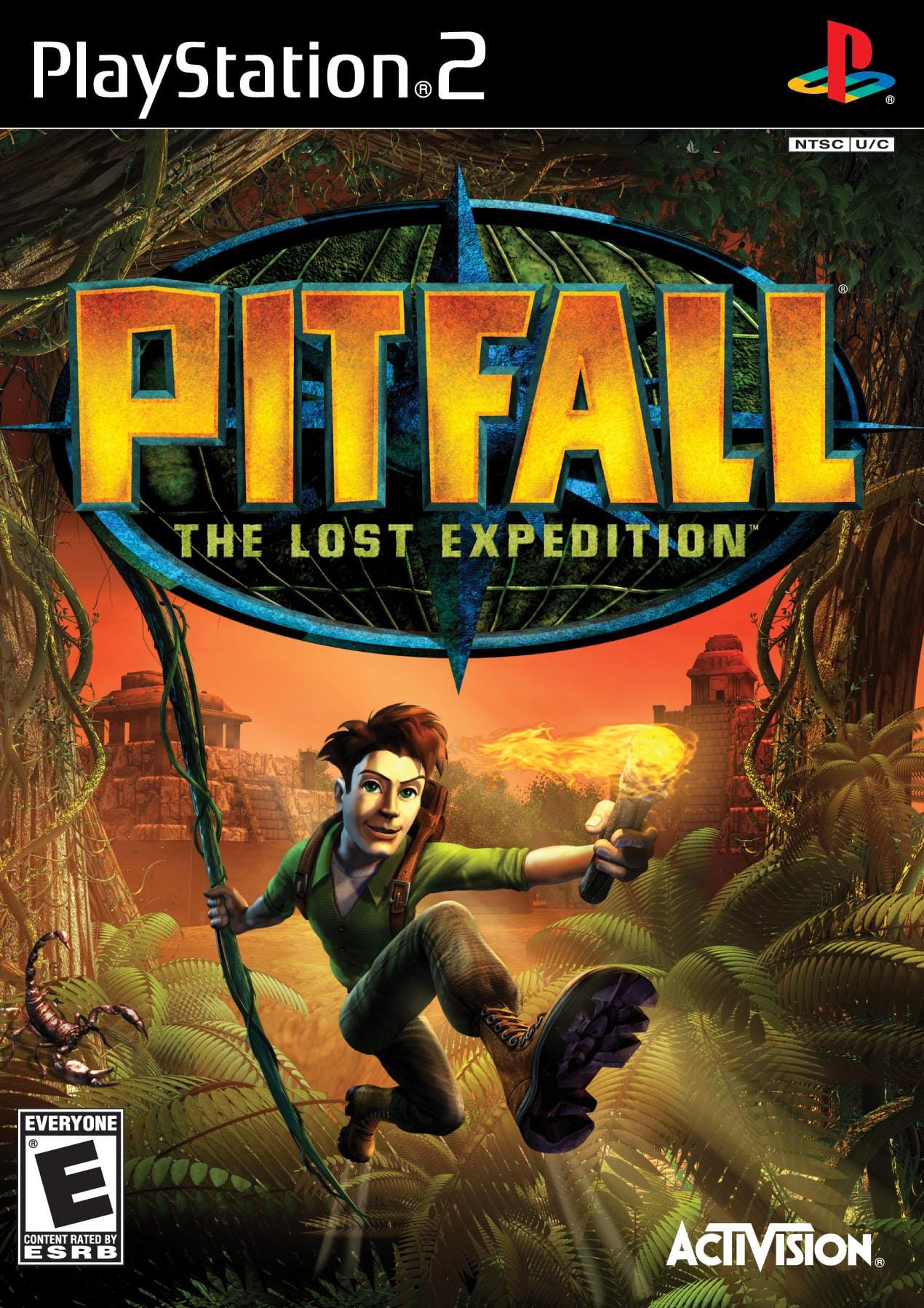
- Developer: Edge of Reality
- Release Date: February 18, 2004
When you hear “Pitfall,” you probably picture blocky vines and pixelated crocodiles. But Pitfall: The Lost Expedition is here to prove that this classic franchise could swing with the big boys of the PS2 era. The gameplay is a solid mix of exploration, combat, and puzzle-solving. The levels are linear but packed with secrets, and the hub world encourages backtracking with new gear—a subtle nod to the Metroidvania genre. The visuals are bright and colorful, with lush jungles, icy caverns, and ancient temples that still hold up surprisingly well. The story is pure pulp adventure, the voice acting is top-notch, and the whole package oozes early-2000s platforming charm.
Why It’s Worth Playing: Pitfall: The Lost Expedition is worth playing because it’s a comfort food platformer done right. It’s the perfect game to scratch that early-2000s itch, and it holds up better than most of its peers. If you’re a fan of Jak, Sly, or even Tomb Raider, this is a hidden gem that deserves your attention. It’s a breezy, enjoyable romp that proves sometimes all you need is a whip, a fedora, and a good sense of humor.
Scaler
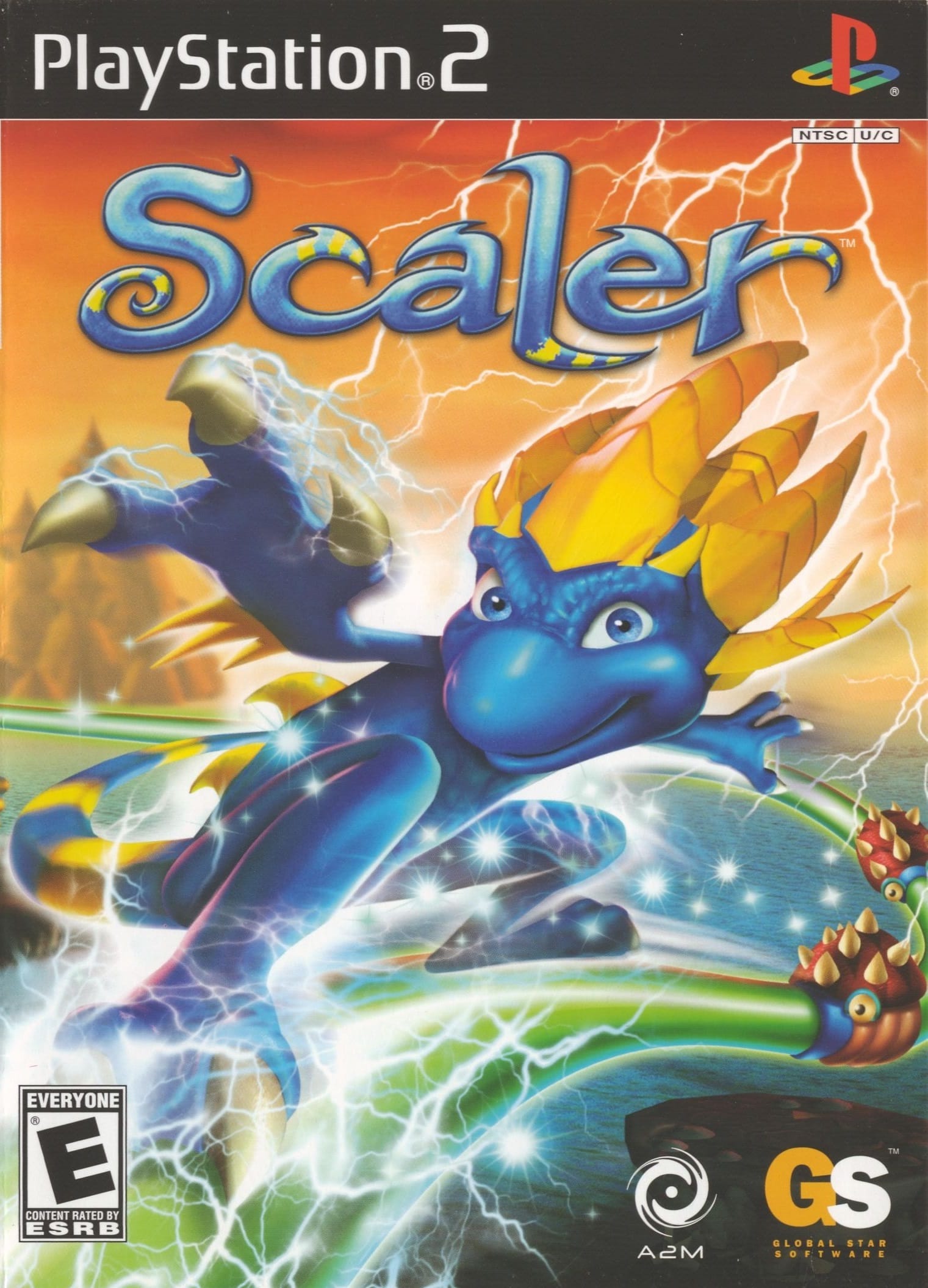
- Developer: Artificial Mind & Movement
- Release Date: October 20, 2004
Scaler flew under many radars but deserves a spot in any conversation about quirky, charming PS2 platformers. It’s the story of Bobby “Scaler” Jenkins, a lizard-loving kid who was captured and zapped with blue lightning, transforming him into a blue reptilian hero. Scaler can transform into five different mutant lizards, each with unique abilities. These forms aren’t just cosmetic; they’re essential for solving puzzles and overcoming environmental hurdles. The levels are sprawling, vibrant, and packed with secrets. Visually, Scaler holds up surprisingly well. The cel-shaded style gives it a timeless cartoony look, and the concept art is staggeringly imaginative.
Why It’s Worth Playing: Scaler is a time capsule of early 2000s platforming, blending exploration, combat, and puzzle-solving with a shape-shifting mechanic that still feels fresh. While its difficulty and jank might frustrate some, those who persevere will find a deeply satisfying adventure with heart, humor, and some of the most inventive creature designs of the era. It’s a hidden gem that proves even lesser-known titles could compete with the big boys—if you’re willing to embrace the challenge.
Whiplash
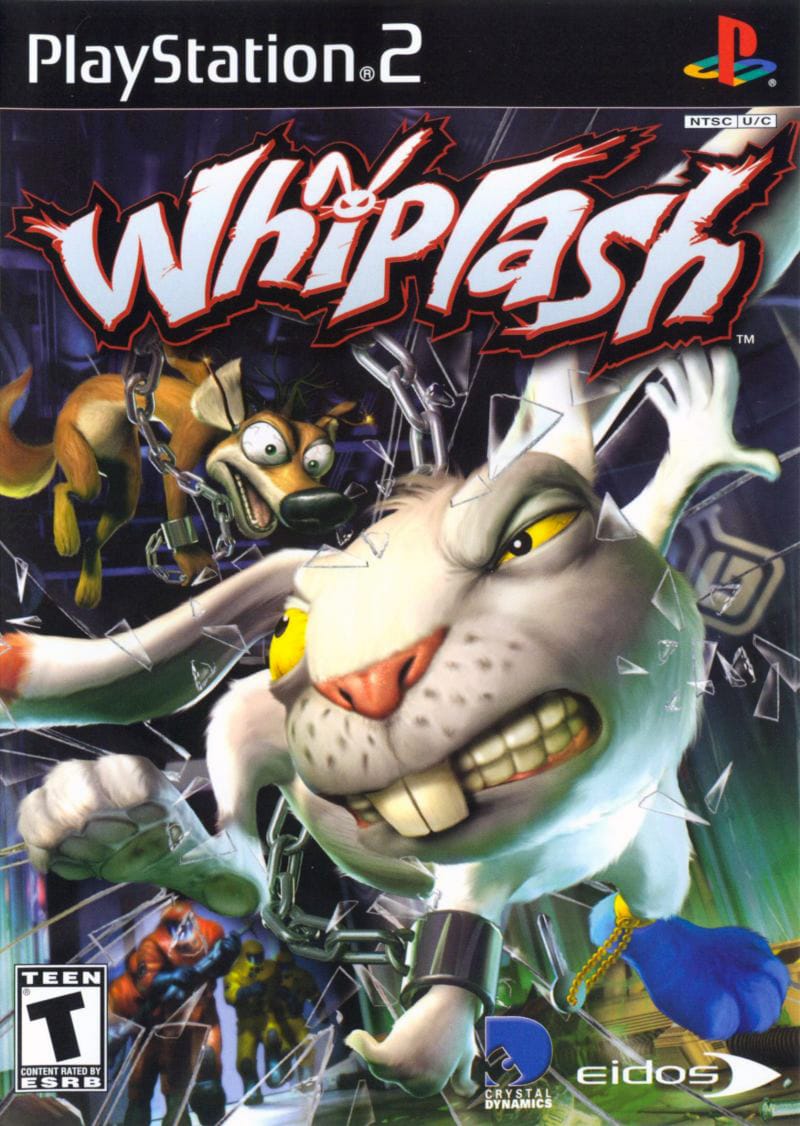
- Developer: Crystal Dynamics
- Release Date: November 18, 2003
Whiplash throws political correctness out the window and replaces it with slapstick violence, corporate satire, and a surprising amount of heart. You play as Spanx, a wisecracking weasel who’s literally chained to Redmond, a perpetually stressed-out rabbit. The duo must escape the evil conglomerate Genron, which tortures animals for profit. The twist? You control both characters at once. Spanx is agile and can whip Redmond around like a flail (hence the title), while Redmond is durable and can be used as a battering ram, a platform, or even a makeshift key. The levels are destructible, encouraging you to smash everything in sight for points and secrets, and the art style holds up surprisingly well.
Why It’s Worth Playing: Whiplash is funny, inventive, and utterly unique, blending dark humor with solid platforming mechanics. While it’s rough around the edges, it’s also bursting with personality—a rare gem that prioritizes creativity over polish. If you’re tired of safe, corporate sequels and want to experience something genuinely weird and memorable, this is your game. It’s a cult classic that deserves to be remembered for its ambition, its humor, and its willingness to be absolutely, unapologetically bonkers.
Dr. Muto
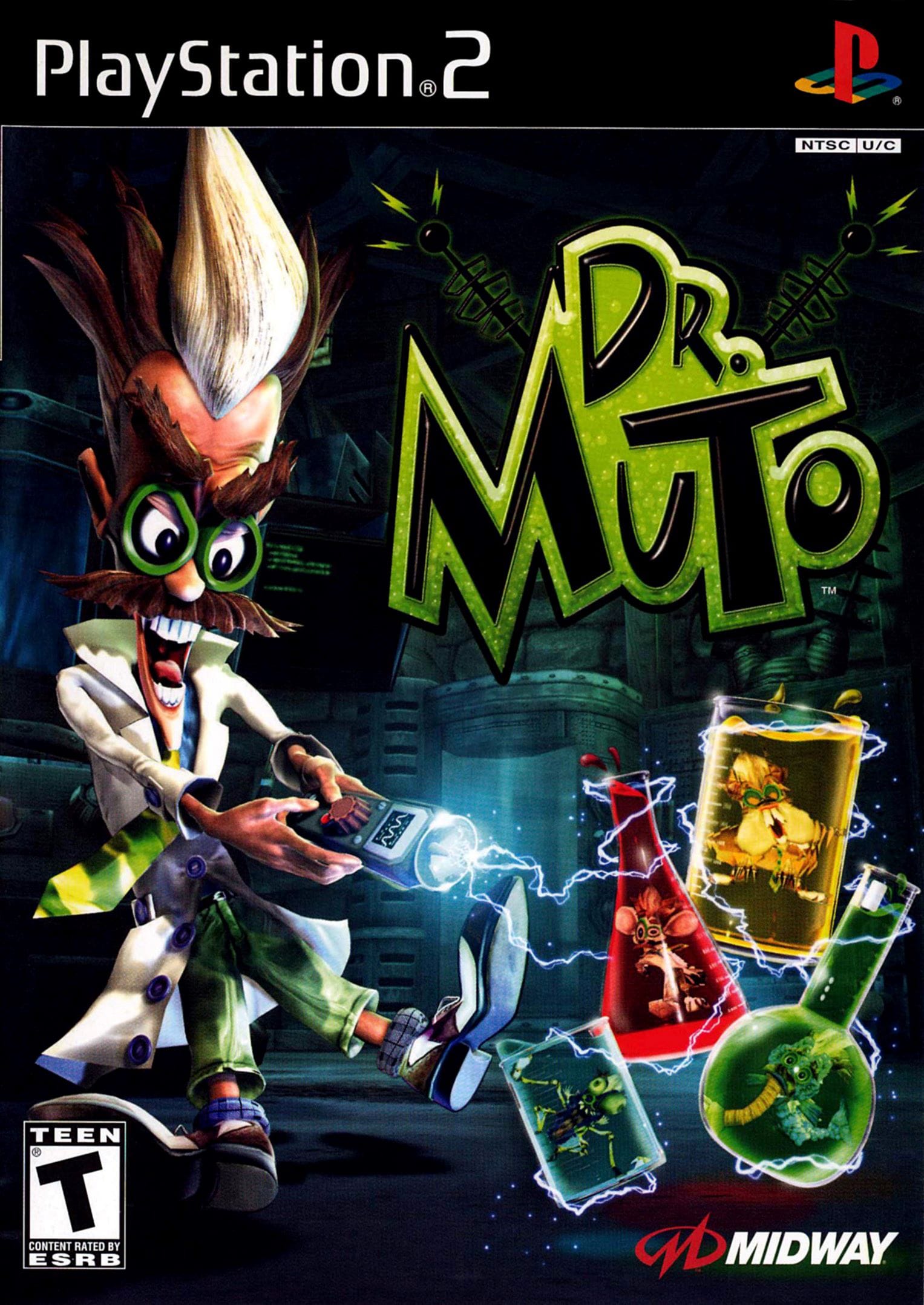
- Developer: Midway Studios San Diego
- Release Date: November 19, 2002
Ever wonder what would happen if Dr. Frankenstein and ToeJam & Earl had a baby? Dr. Muto is that gloriously unhinged lovechild. You play as Dr. Muto, a brilliant but eccentric scientist who accidentally blows up his own planet (oops) and must now rebuild it molecule by molecule by stealing resources from other worlds. The gameplay revolves around splicing DNA to transform into different creatures, such as a mouse or ape, each with unique abilities. The platforming is solid, the combat is clunky but functional, and the puzzles are genuinely clever, often requiring you to combine abilities in creative ways. The levels are sprawling, multi-tiered affairs packed with secrets, hazards, and plenty of dark humor.
Why It’s Worth Playing: Dr. Muto doesn’t care about polish—it cares about ideas. While it never quite reaches the heights of the genre’s giants, it’s a fascinating title that deserves to be remembered for its sheer audacity. It’s a cult classic in the truest sense—a game that failed commercially but deserves a second look for its bold ideas and undeniable personality.
Conclusion
And there you have it—the definitive tour through the 30 best PS2 platformer games that defined a generation. From the explosive weaponry of Ratchet & Clank and the gritty storytelling of Jak II to the stylish heists of Sly Cooper and the hidden brilliance of cult classics like Whiplash and Scaler, this era was a true golden age for the genre. These games weren’t just about collecting shiny objects or reaching the end credits; they were about creativity, character, and pure joy.
Revisiting these titles isn’t just a nostalgia trip—it’s a reminder of how much heart and personality games can have. In an age of hyper-realistic graphics and sprawling open worlds, the charm, tight design, and imaginative spirit of PS2 platformers still feel fresh and exciting today. Thankfully, many of these classics are more accessible than ever, whether through remasters, digital re-releases, or the magic of emulation.
So, what’s your next move? Did this list remind you of a long-lost favorite, or are you inspired to try a hidden gem for the very first time? Fire up that PS2, grab your memory card, and dive back into one of these unforgettable adventures. And if we missed one of your personal favorites, let us know—because the conversation around these classics is what keeps their spirit alive. Happy gaming!





